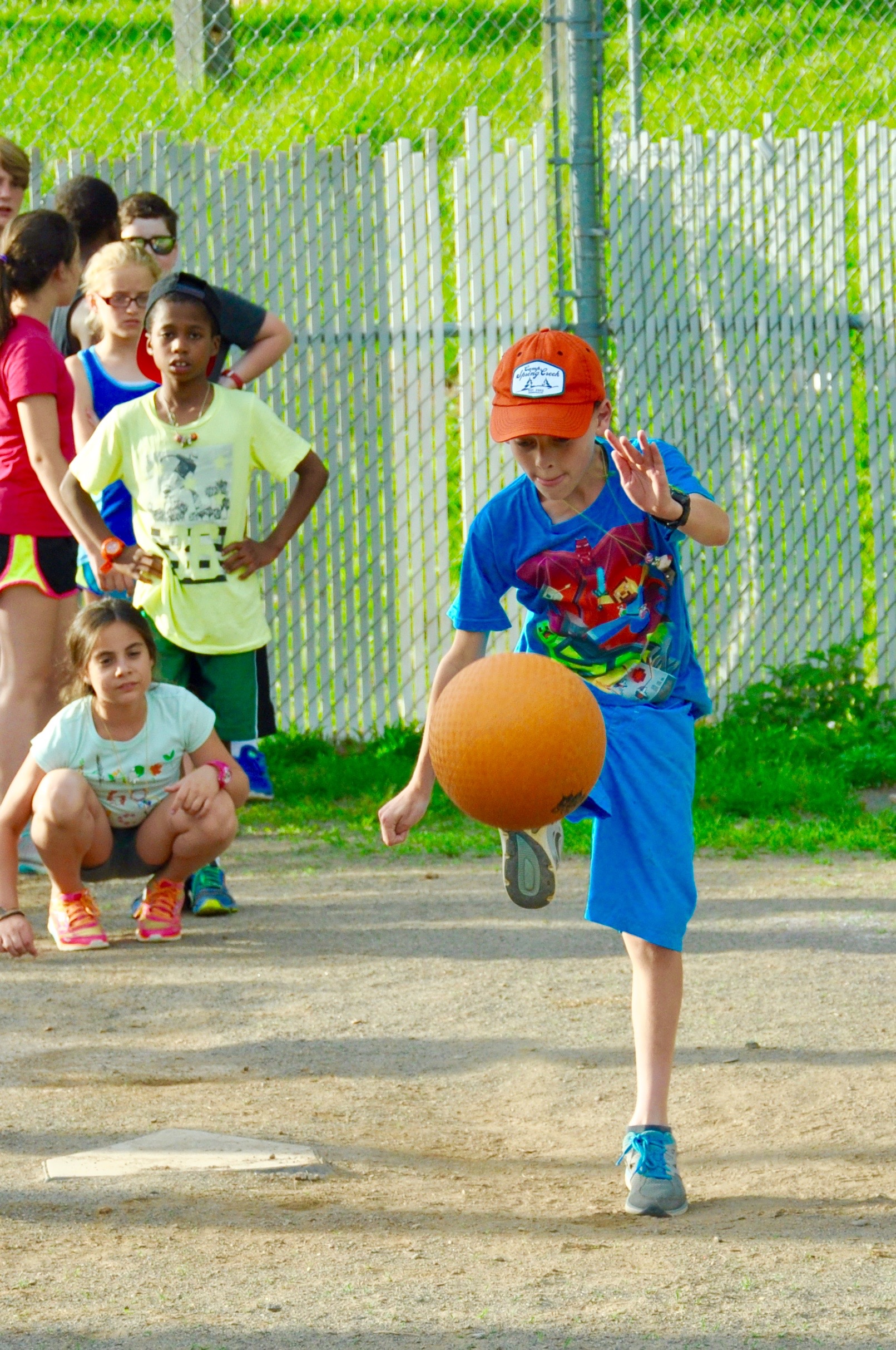
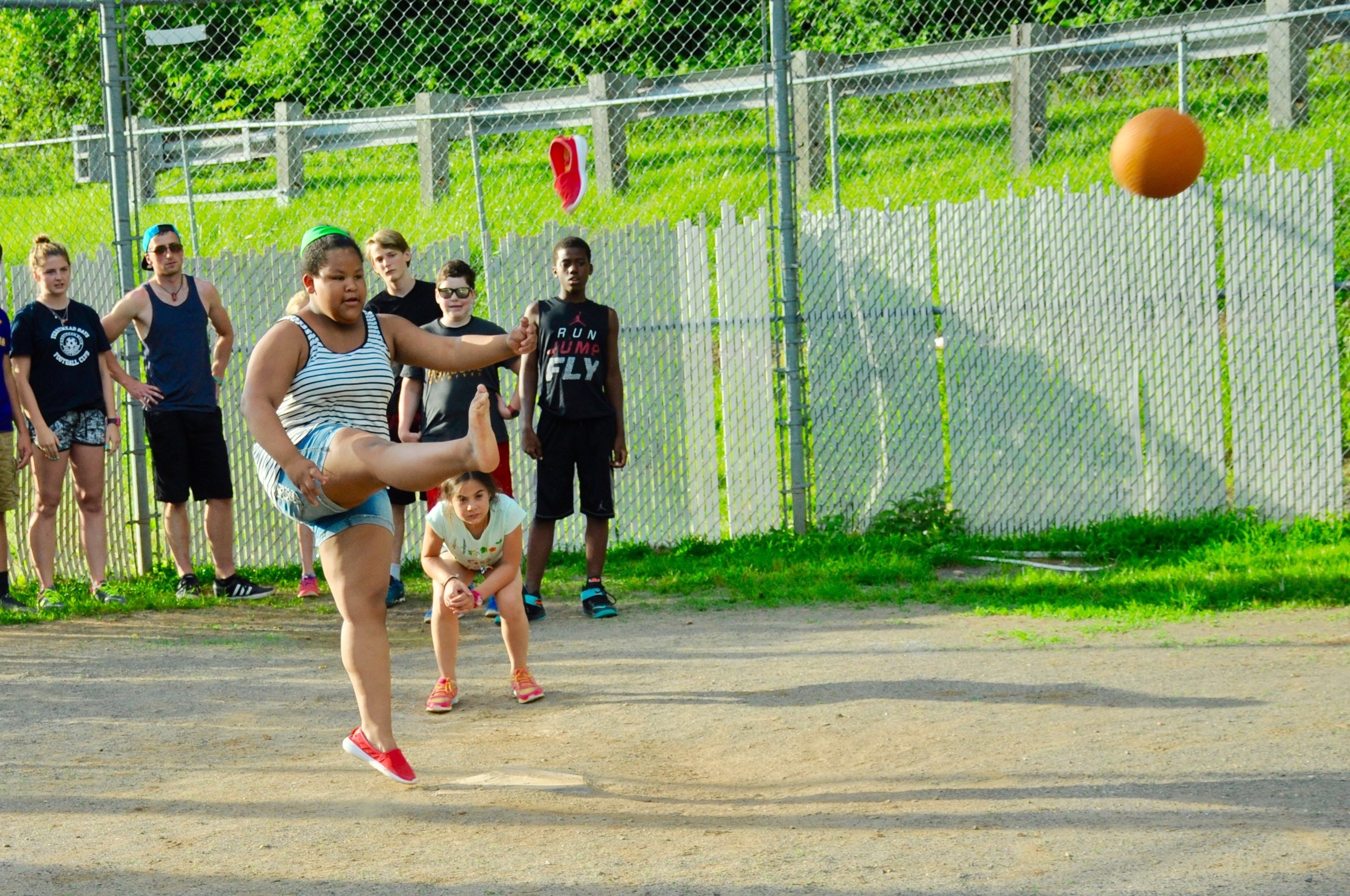
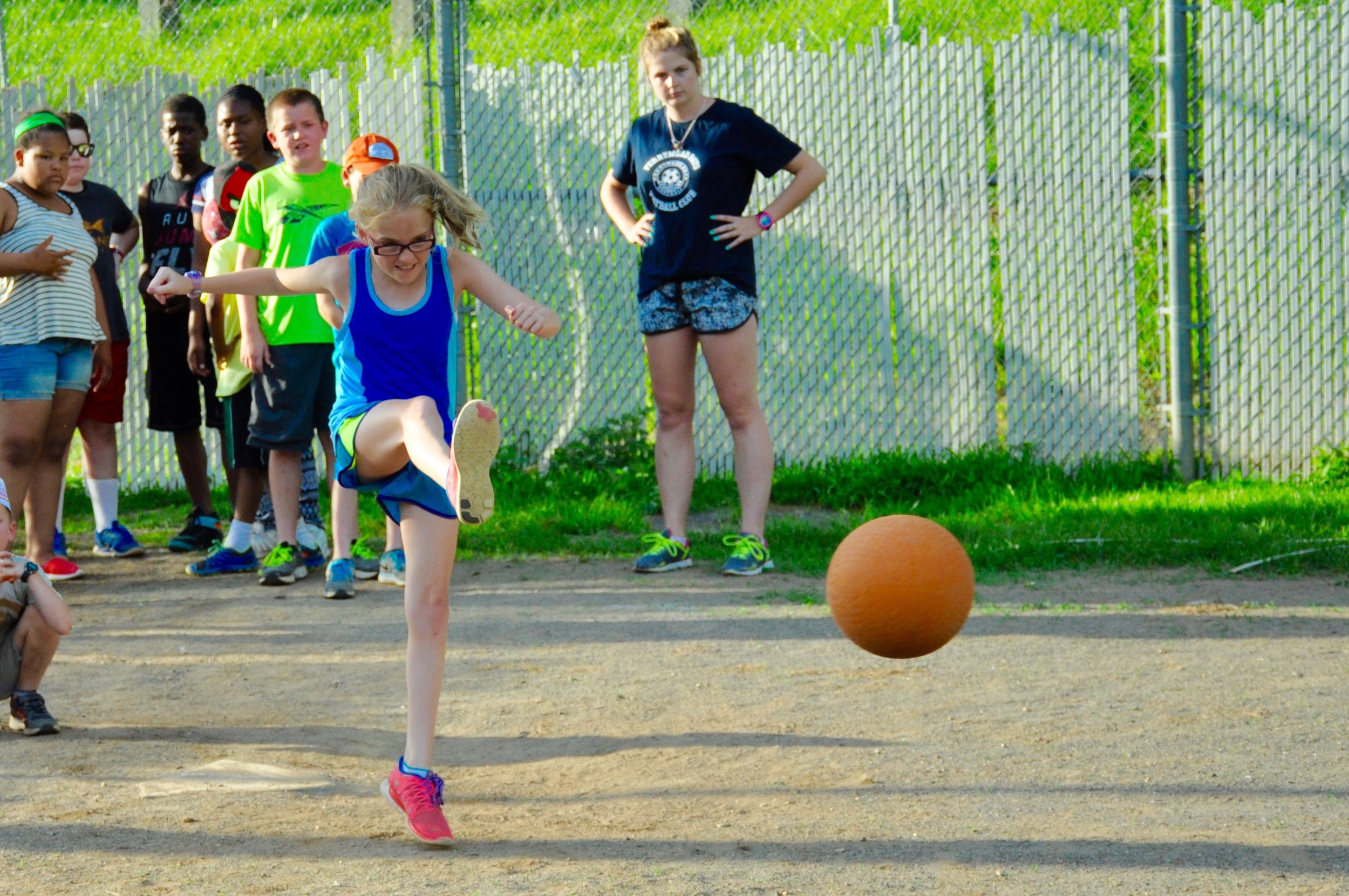
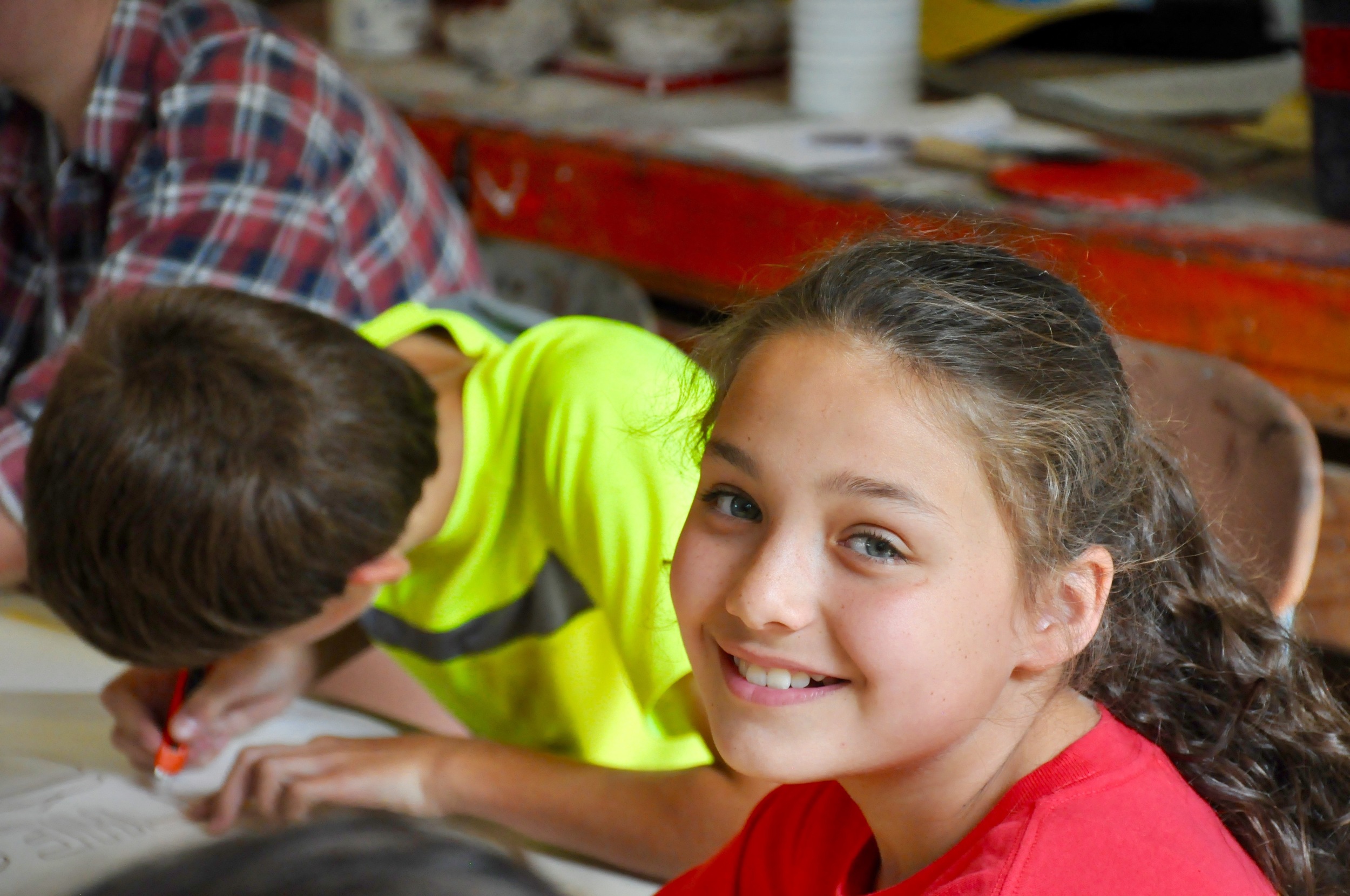
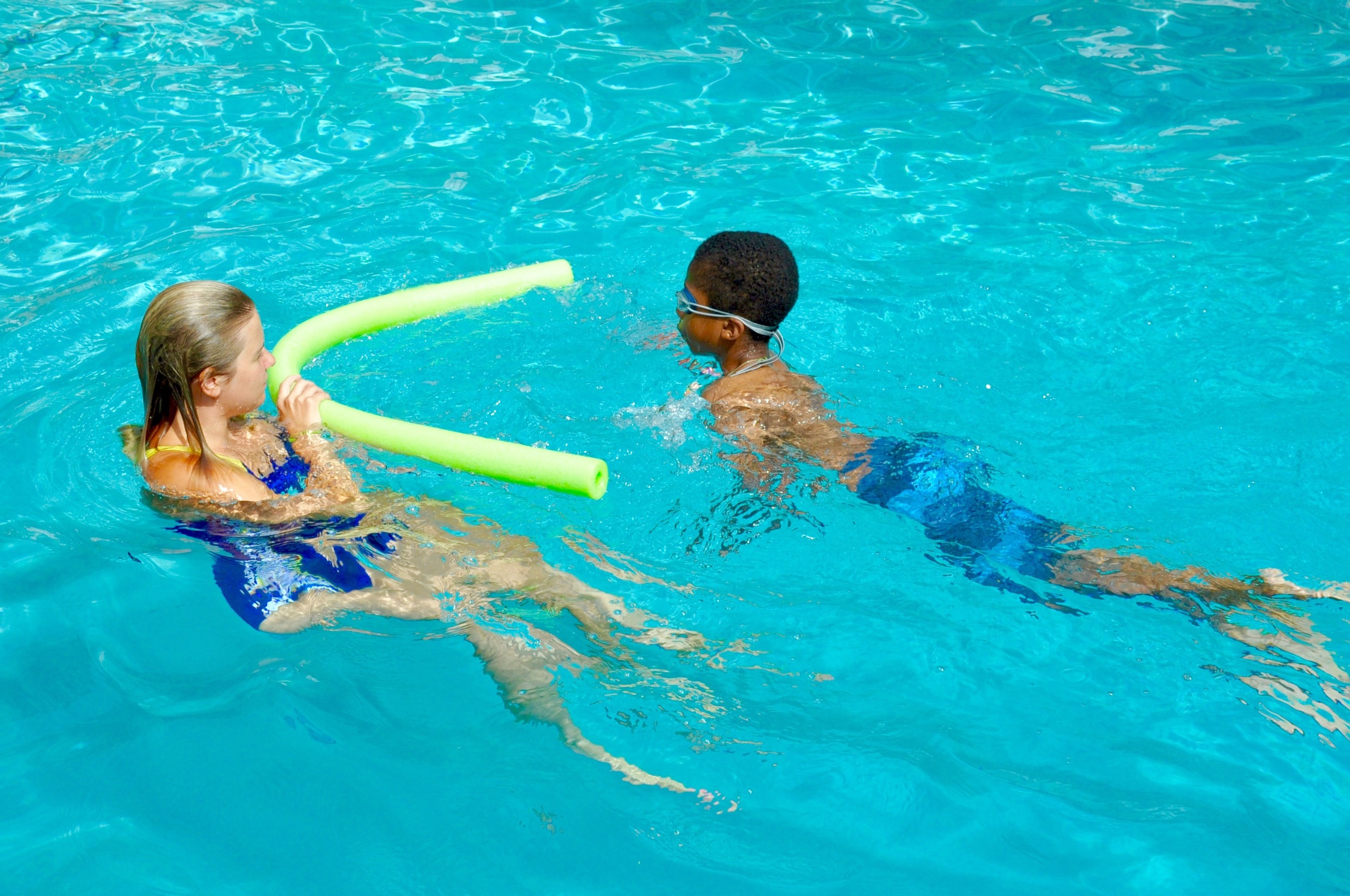
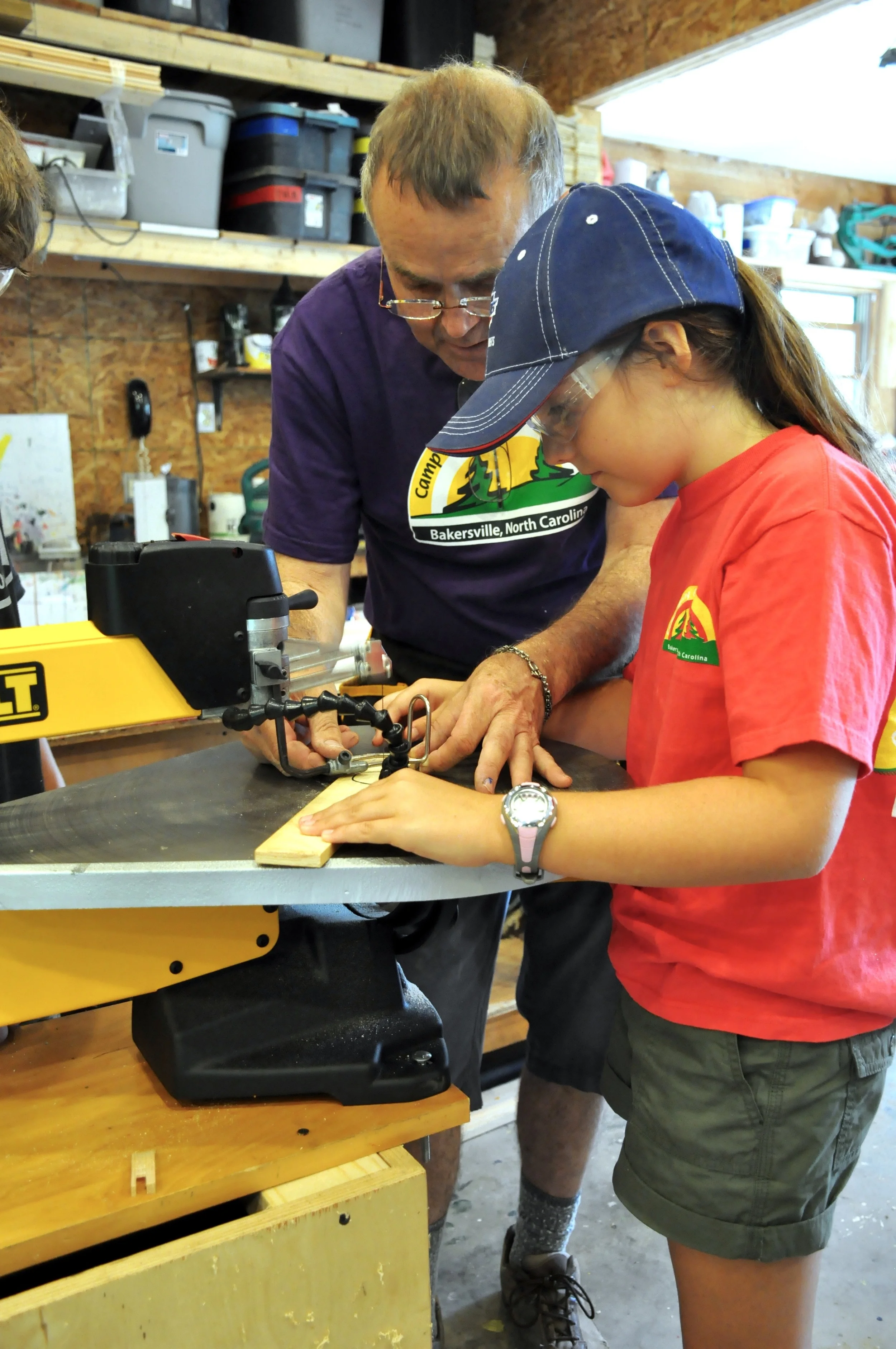
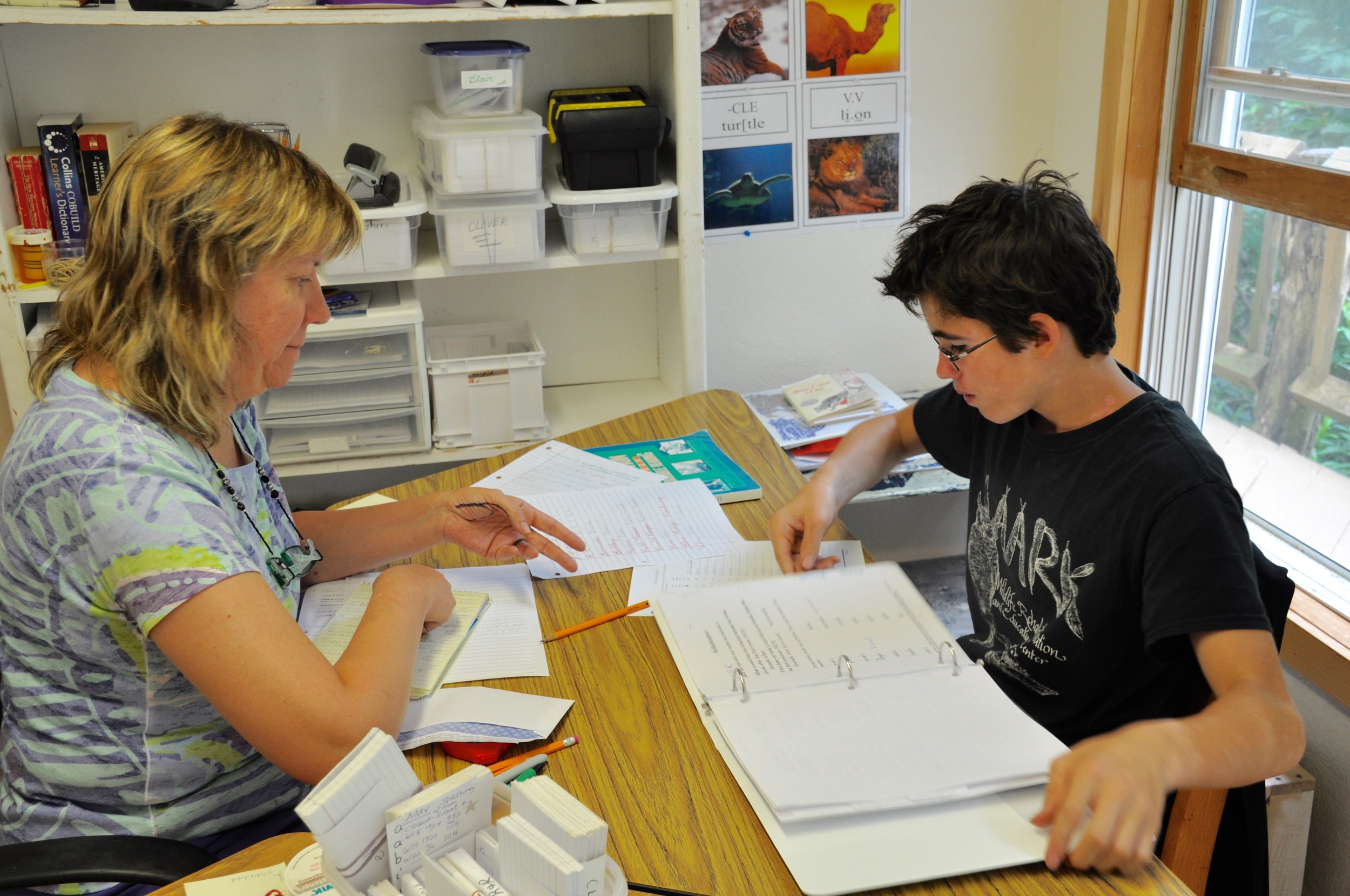
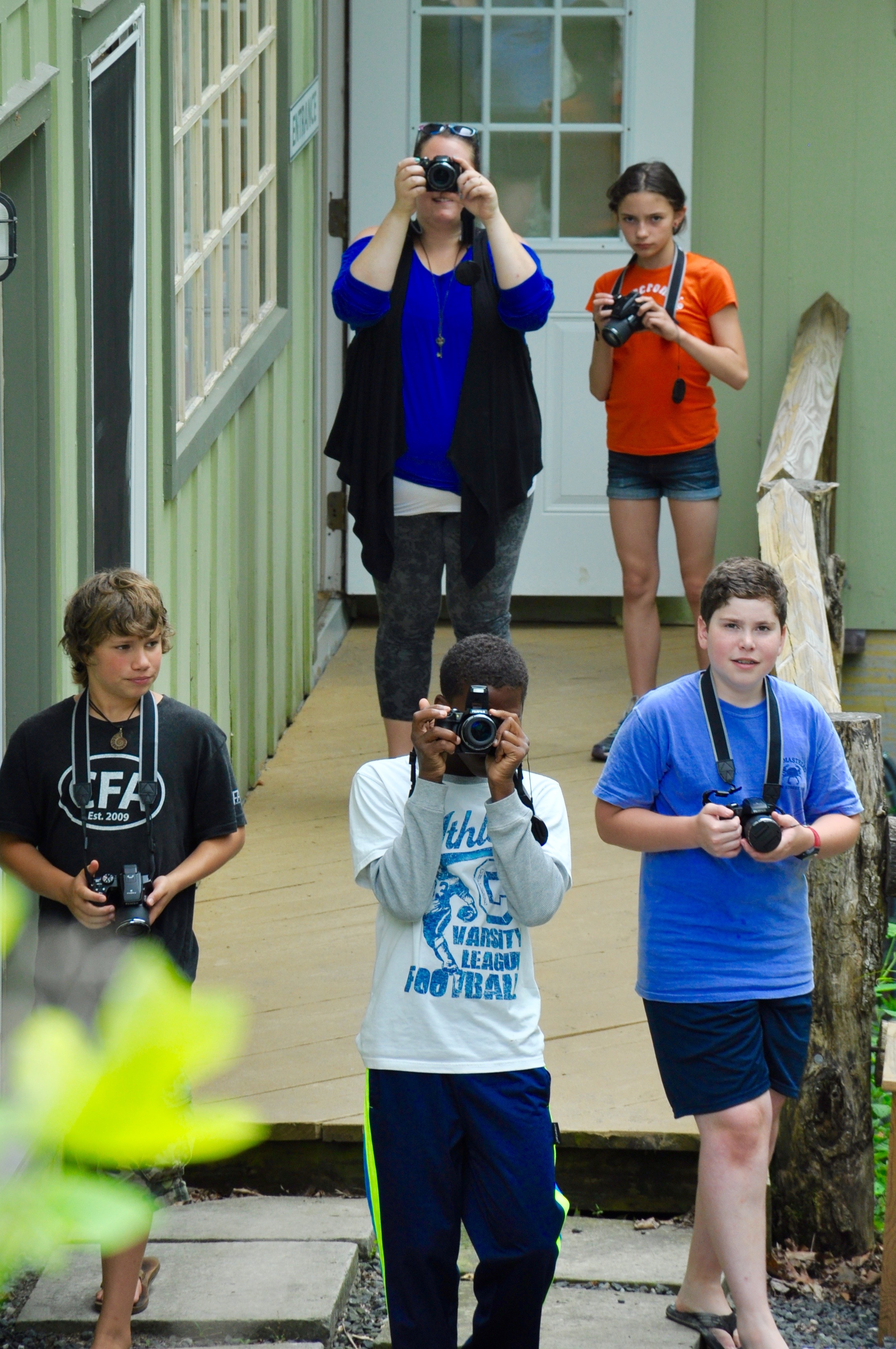
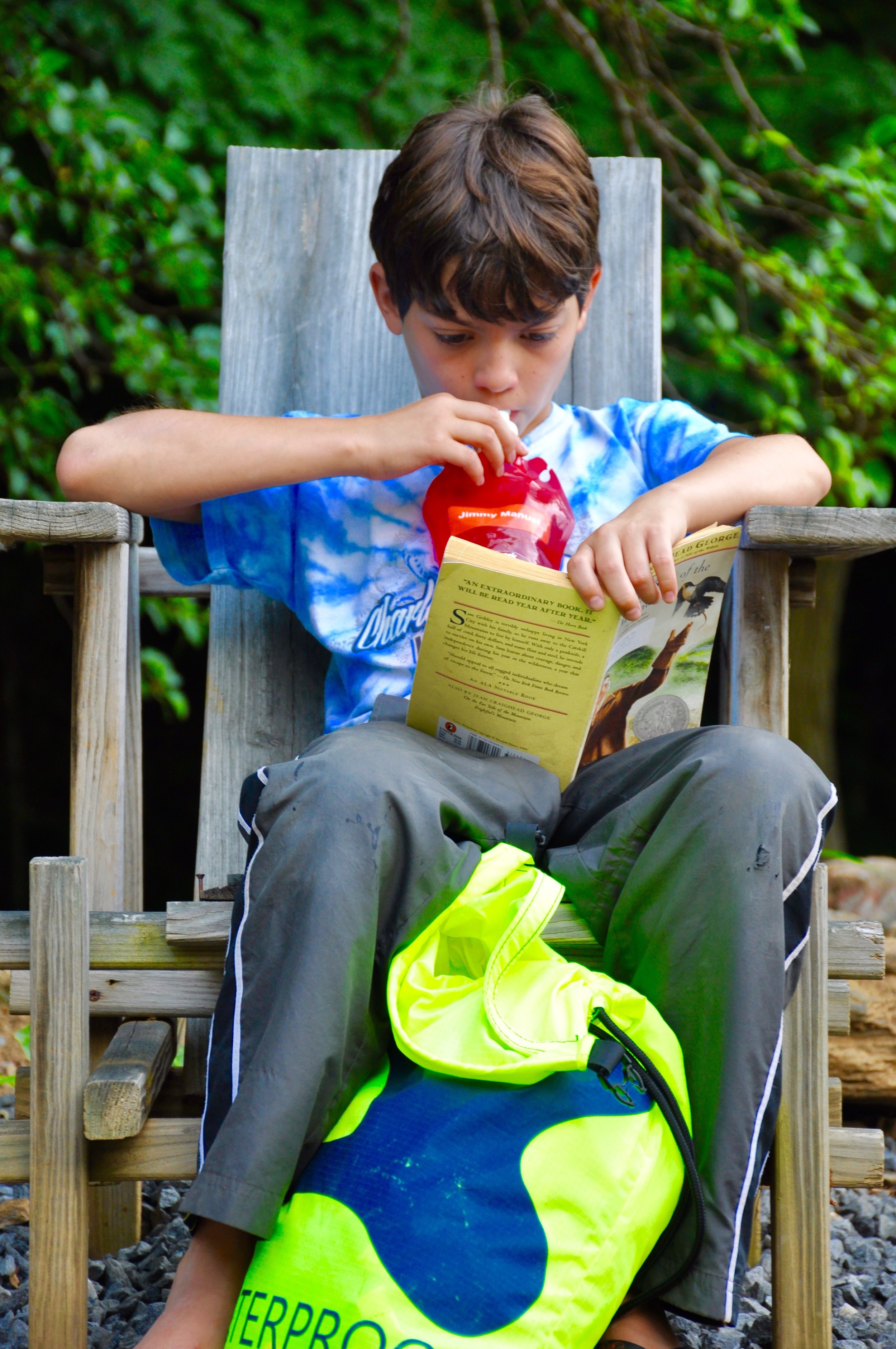
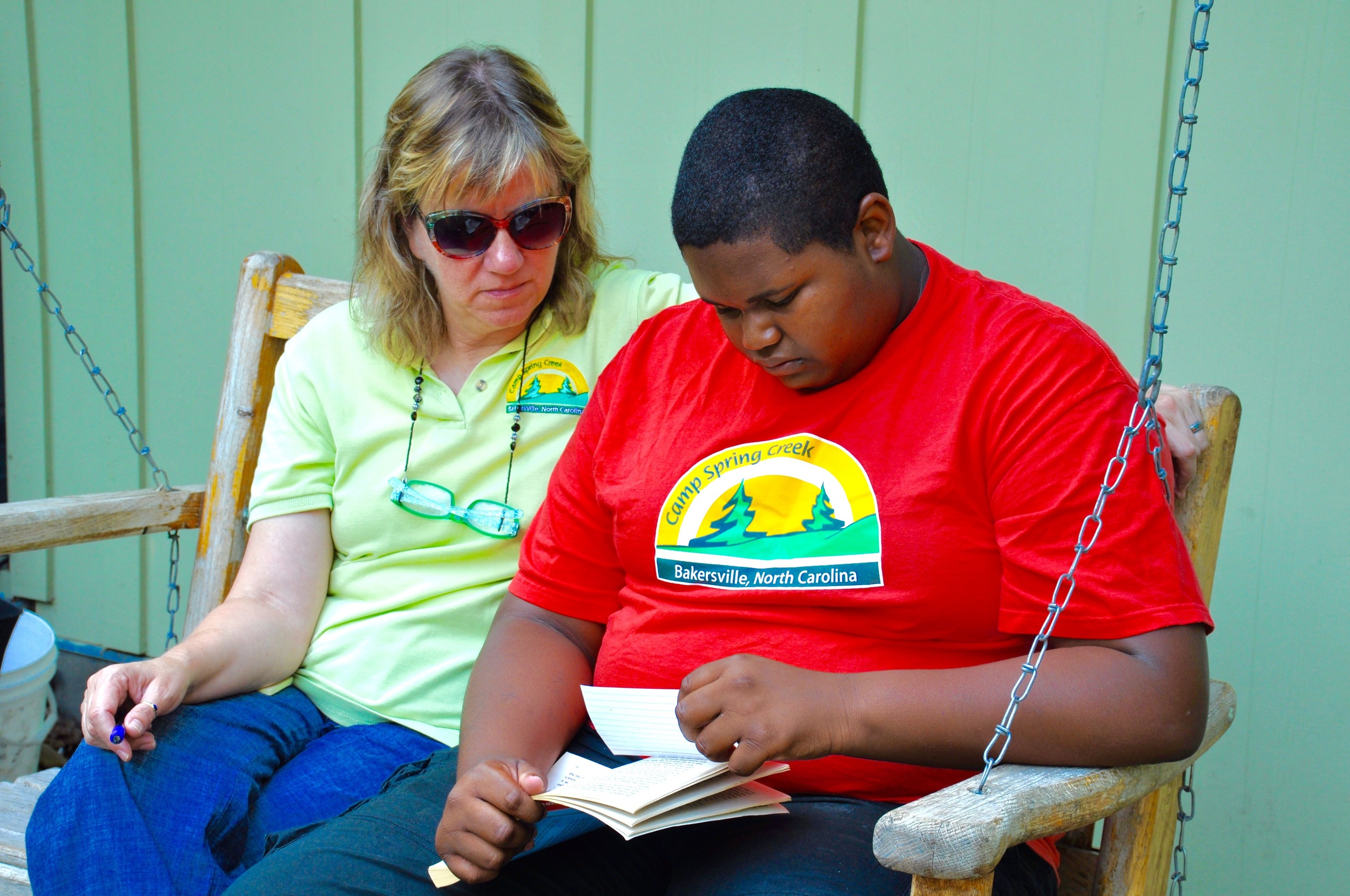
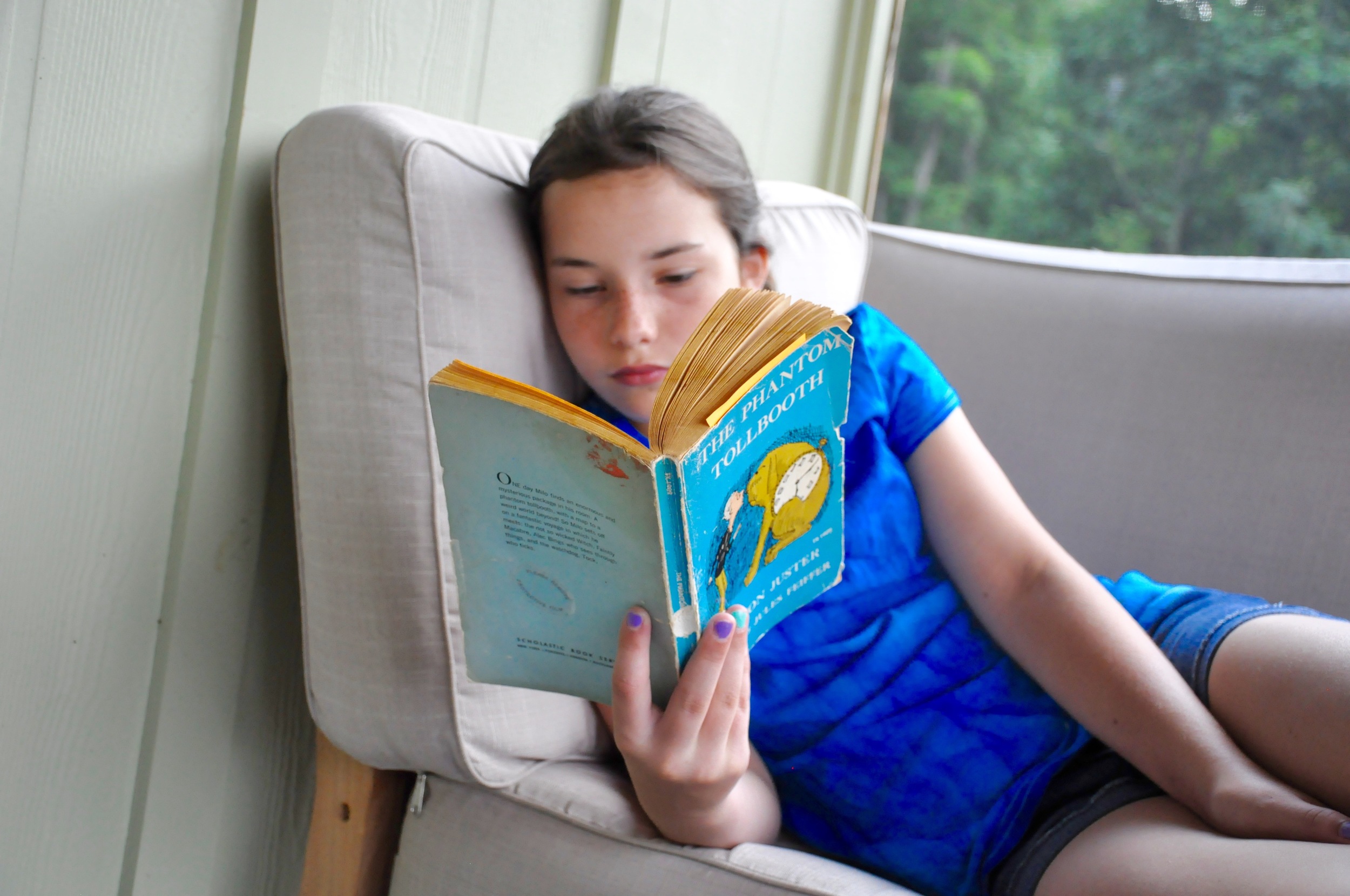
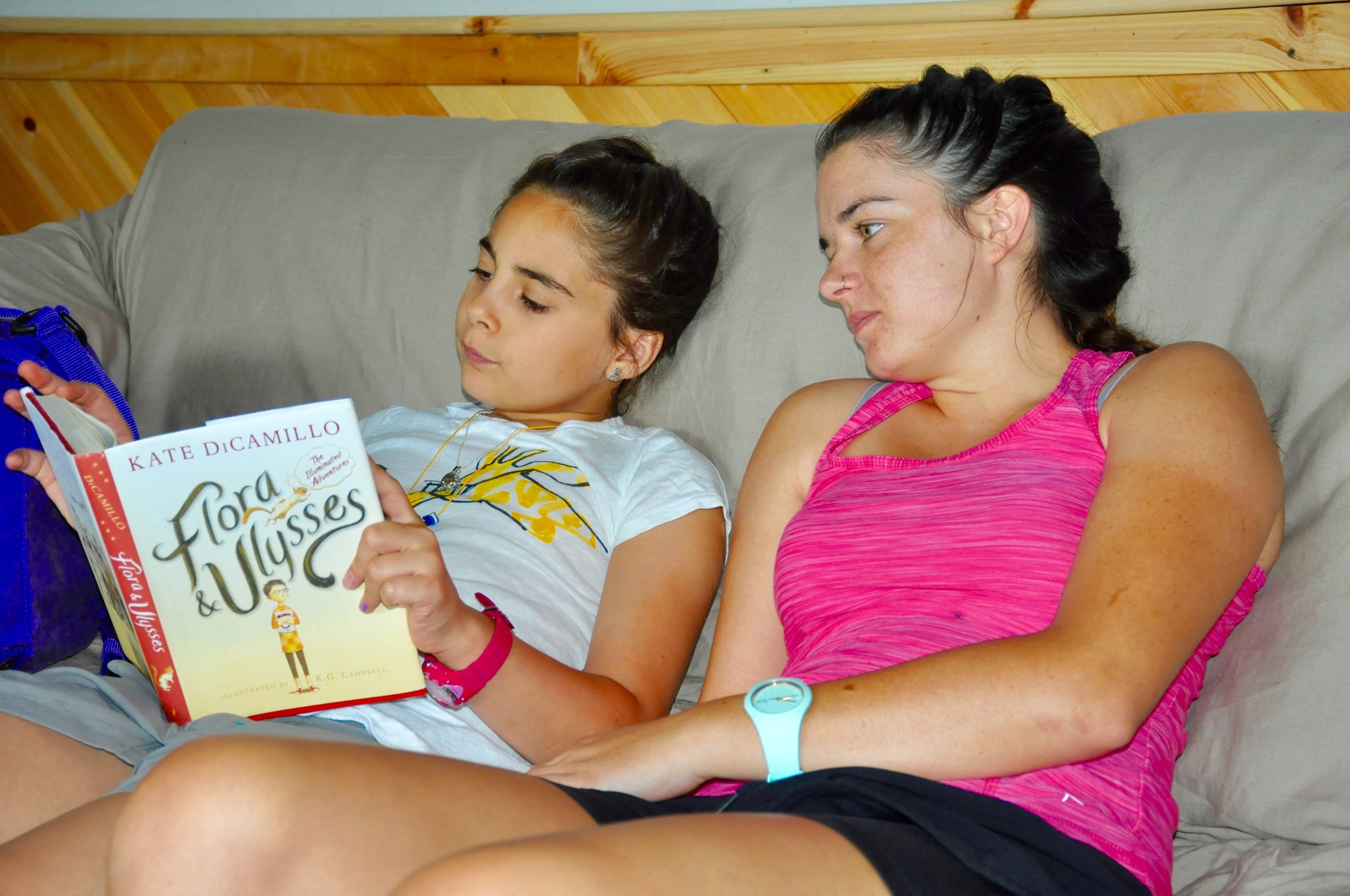
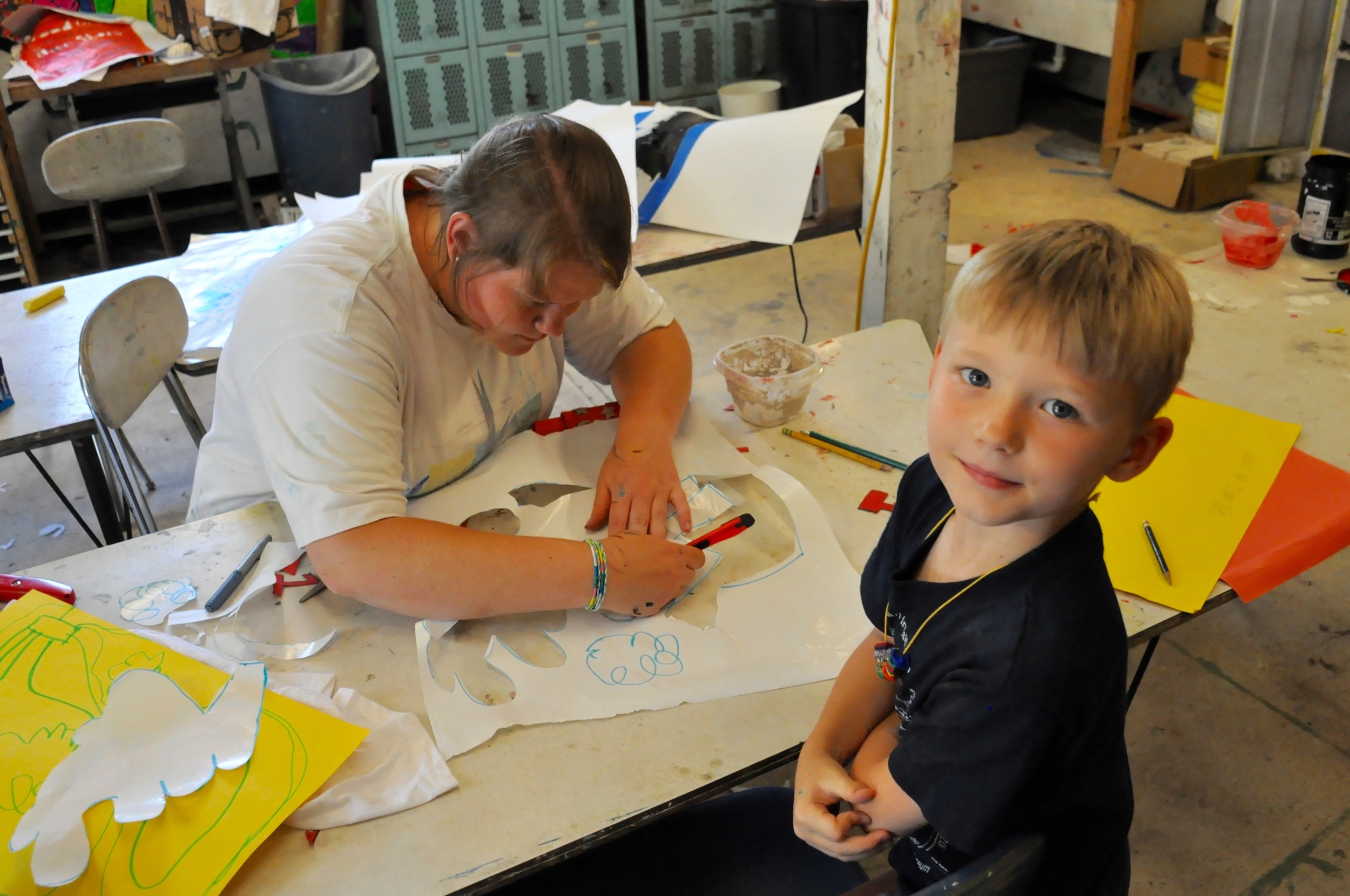
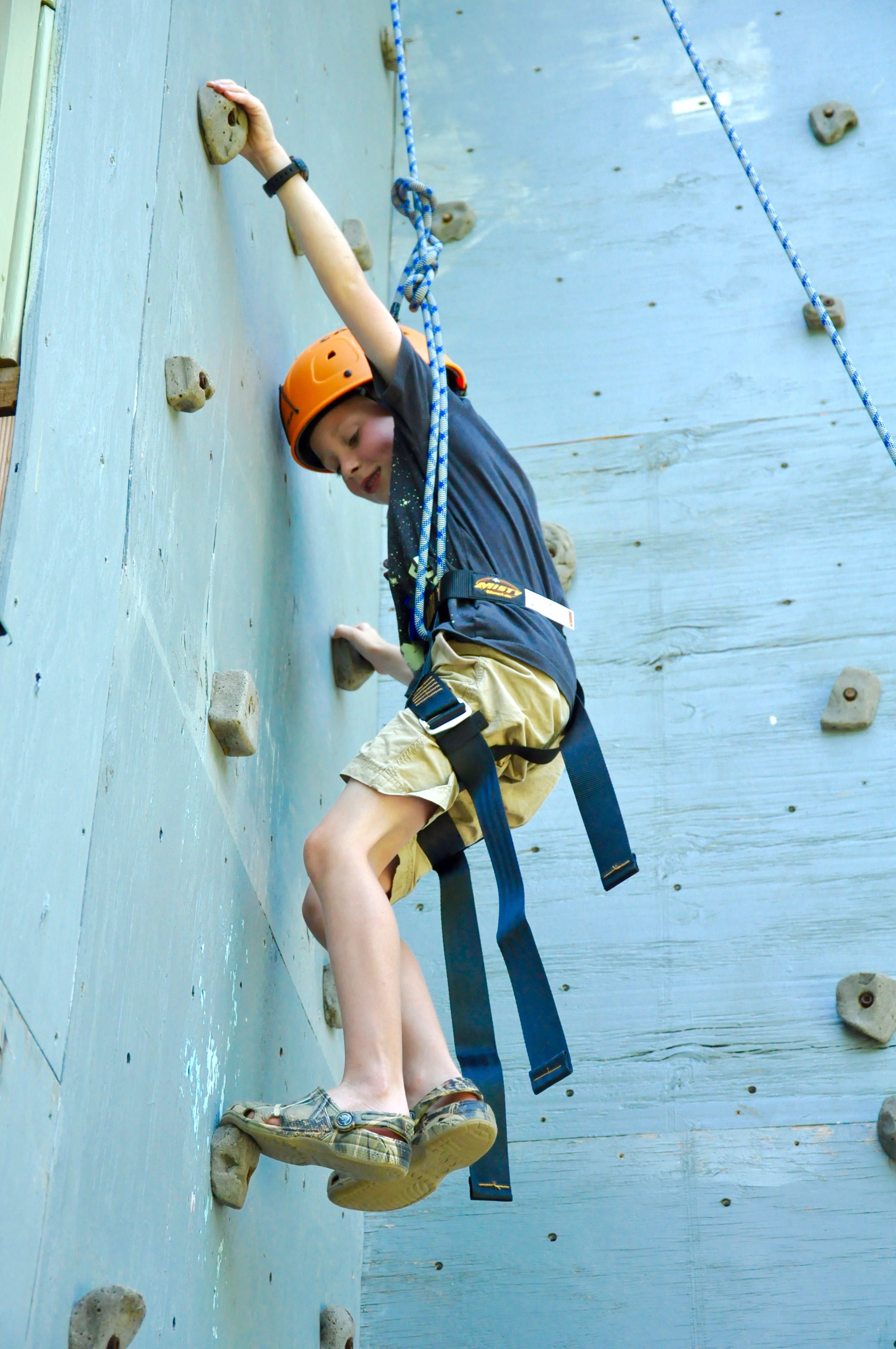
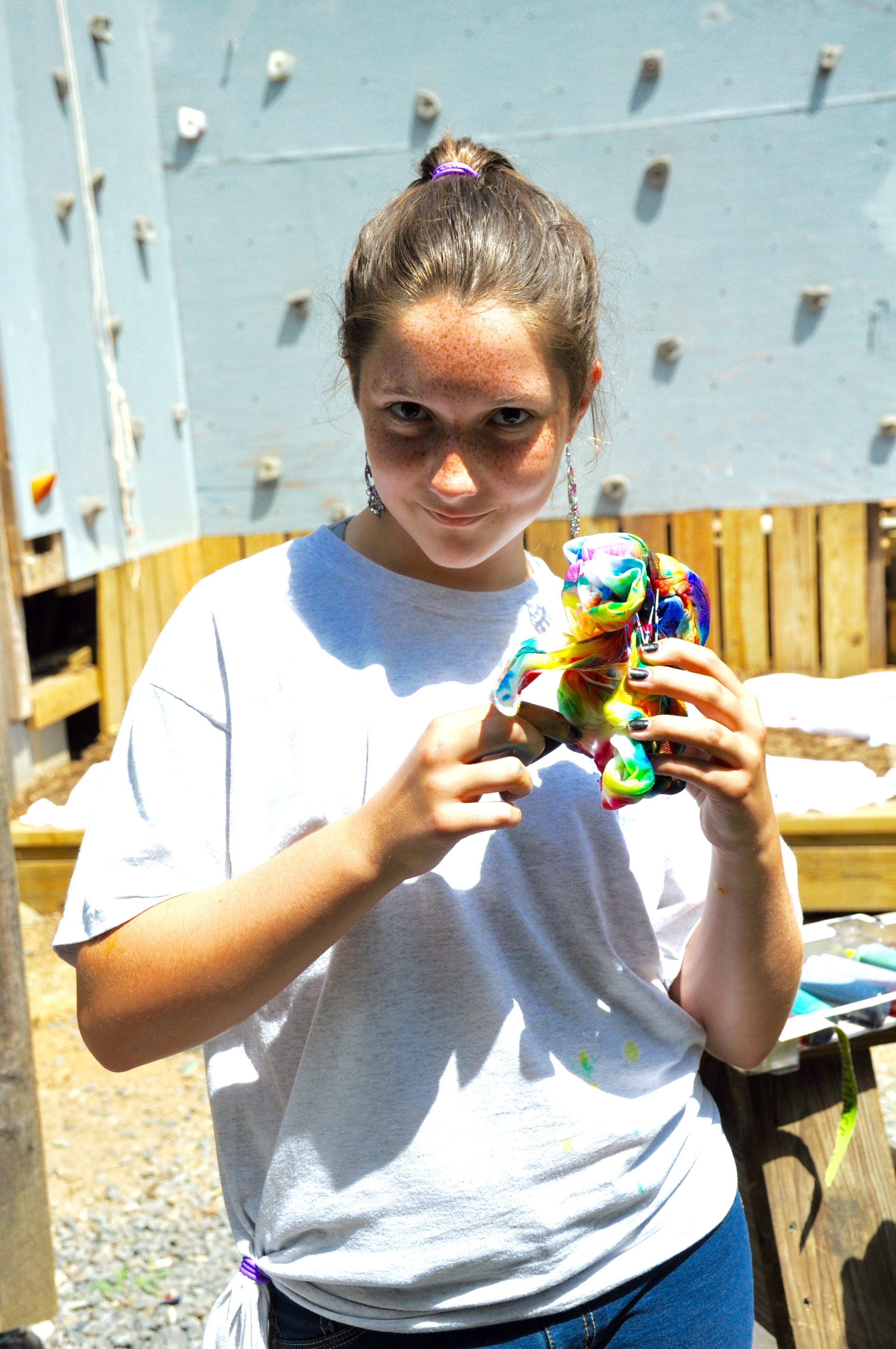
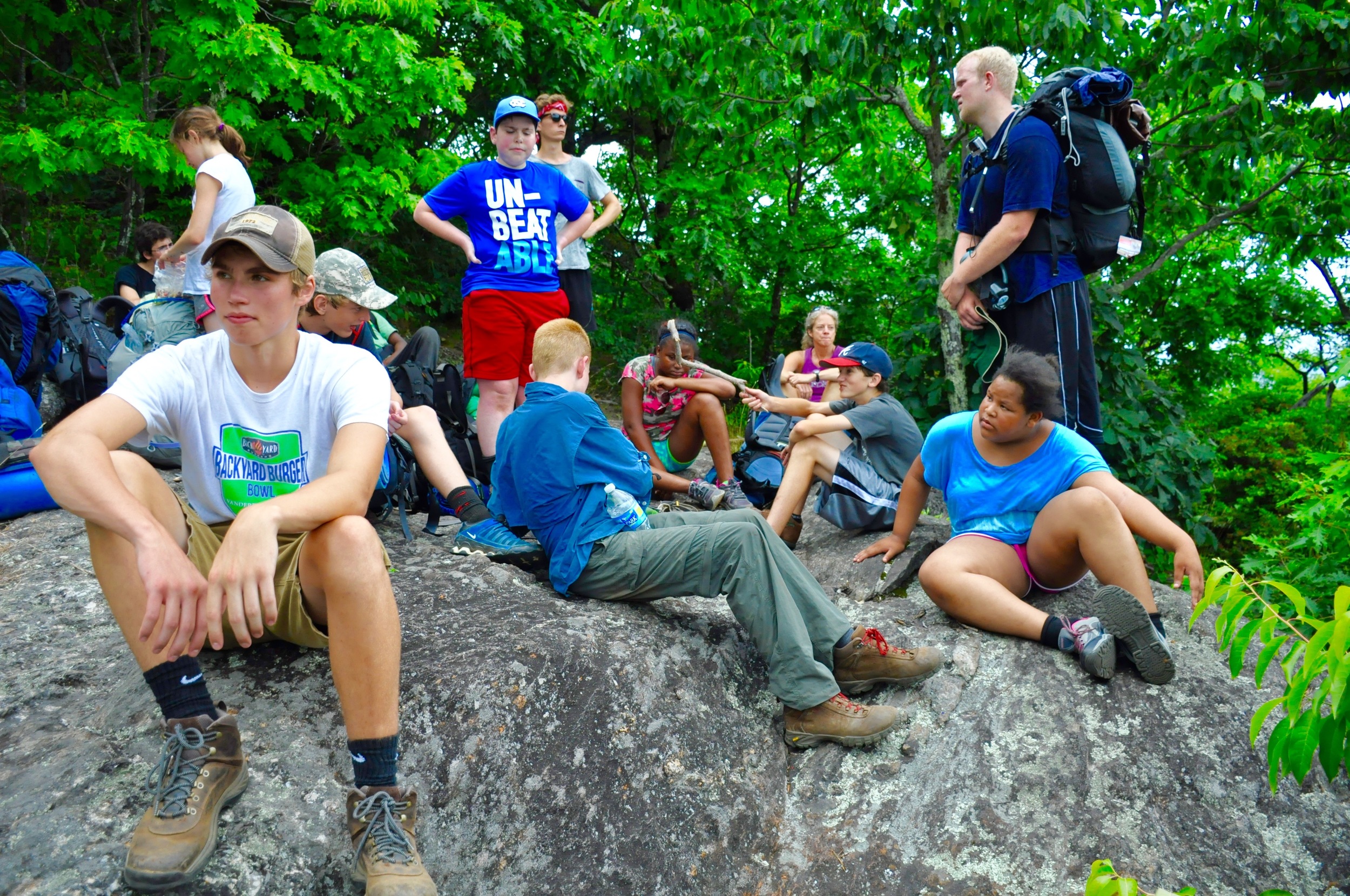
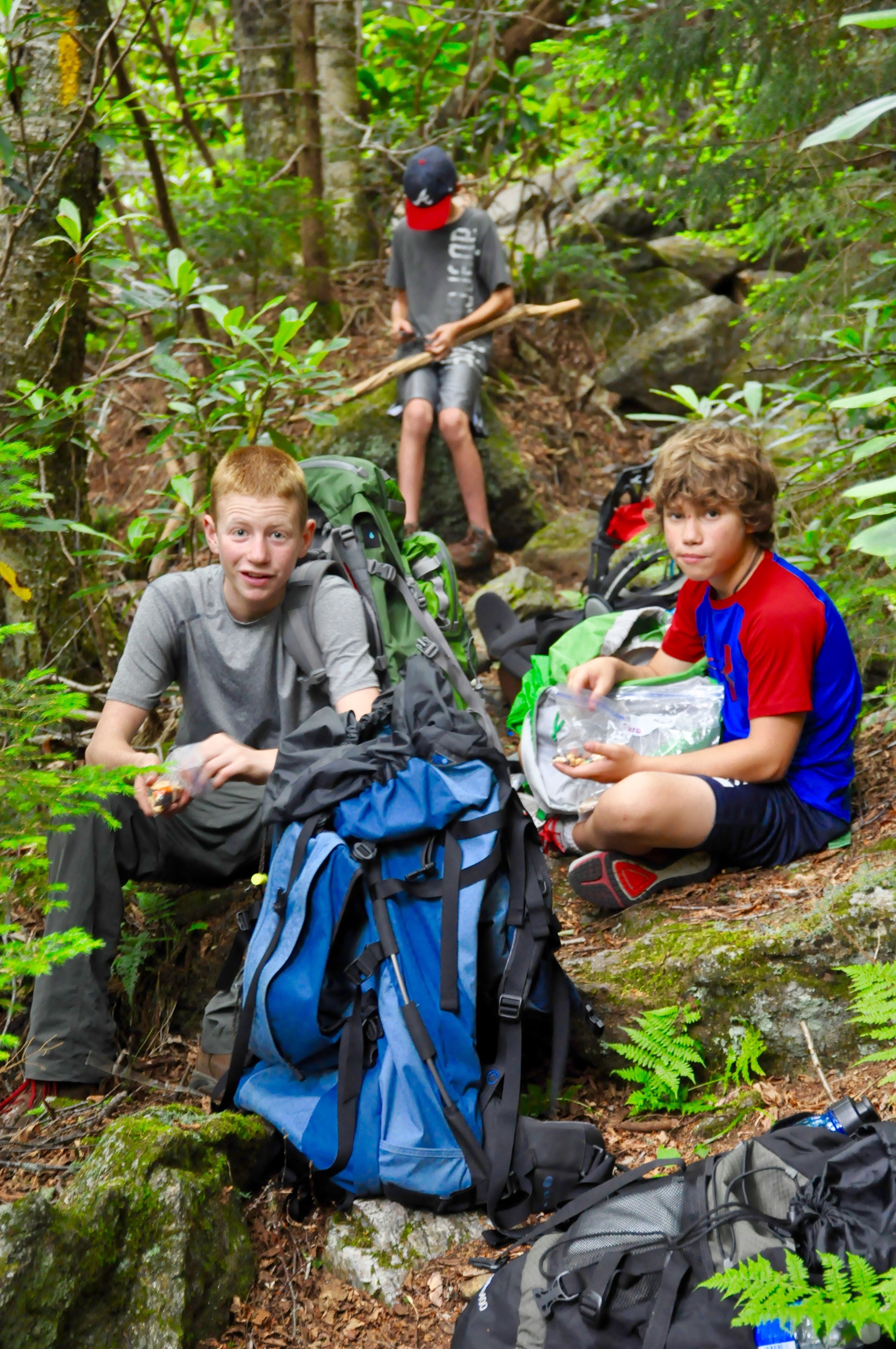
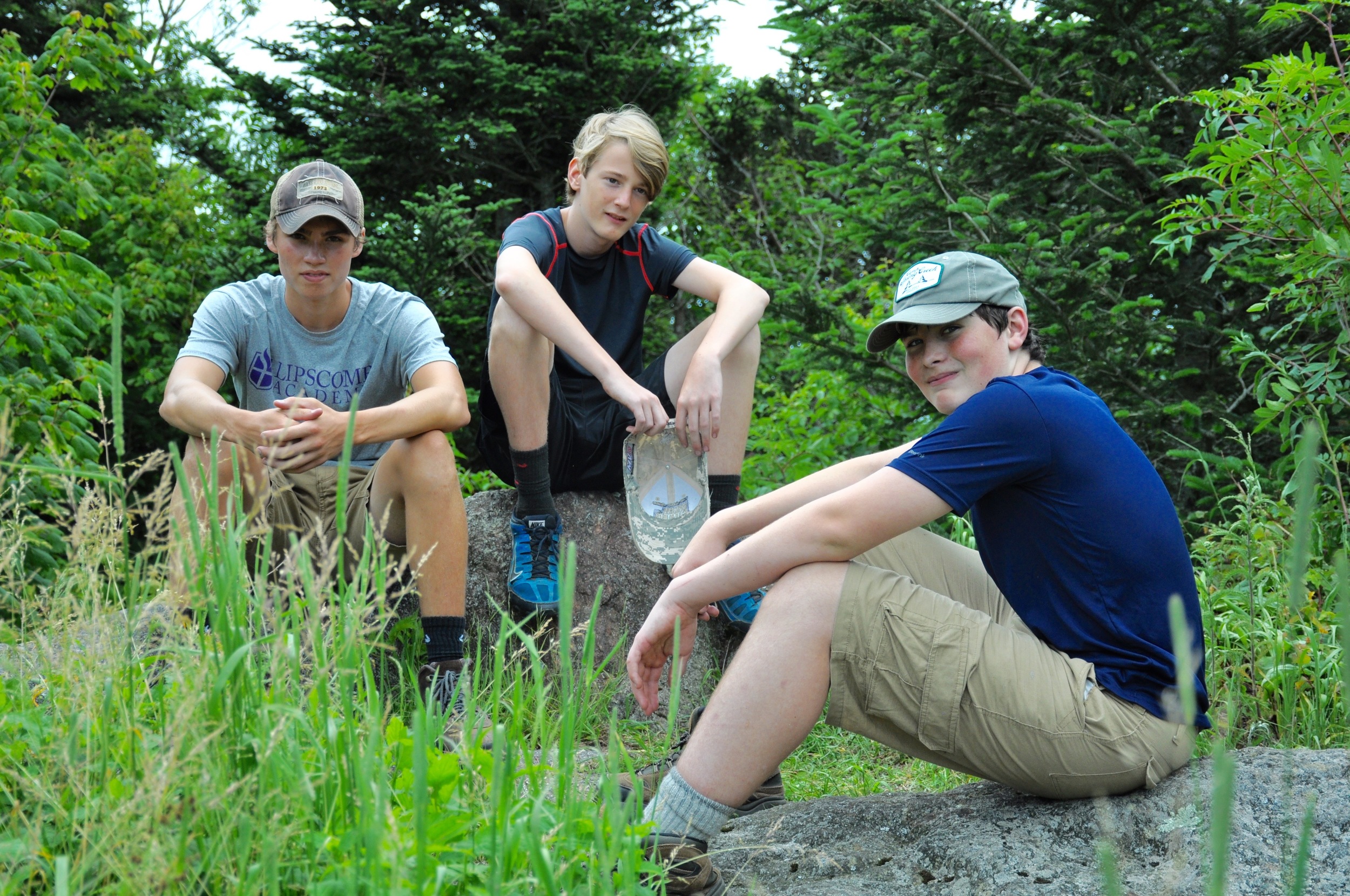
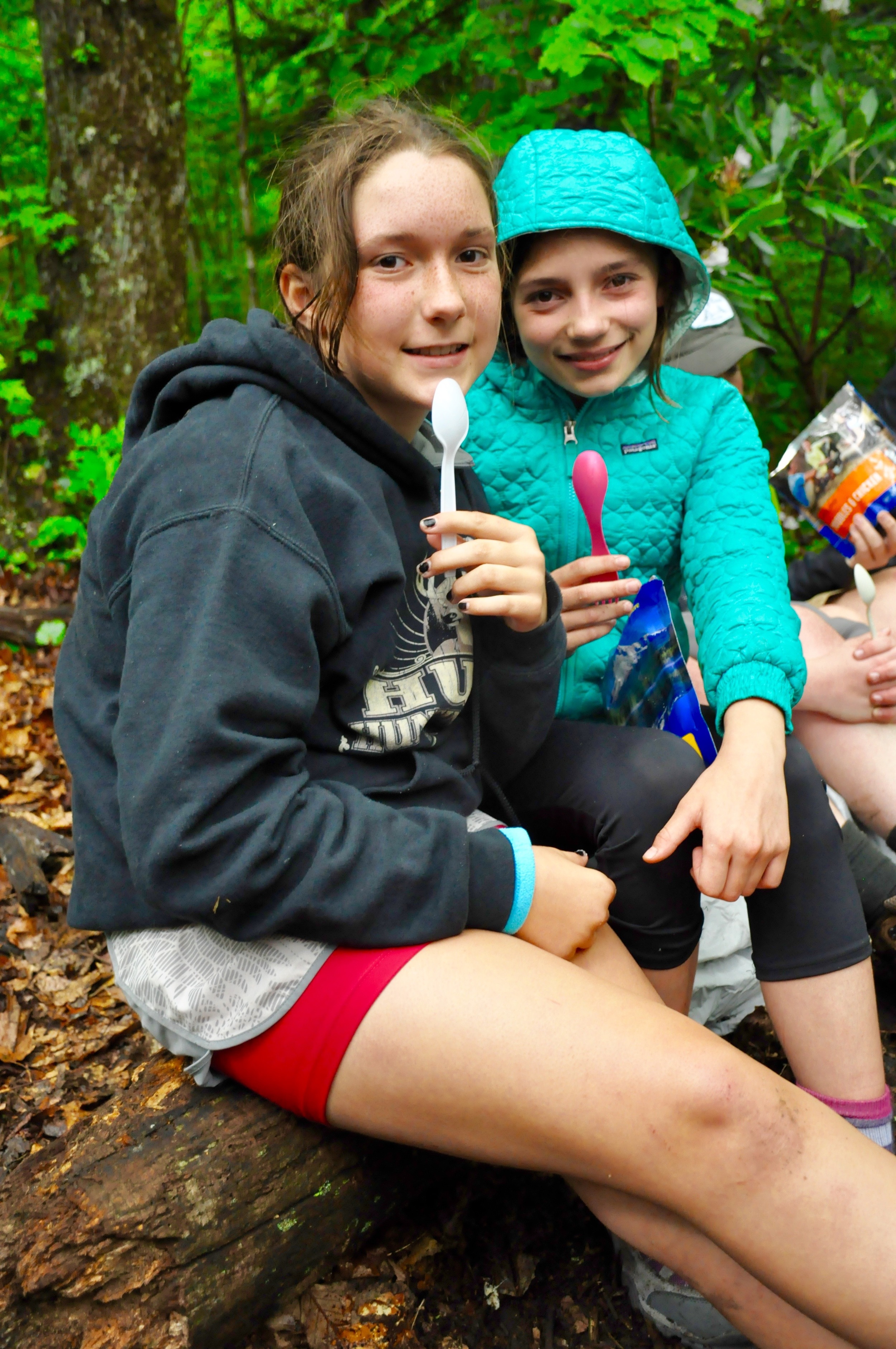
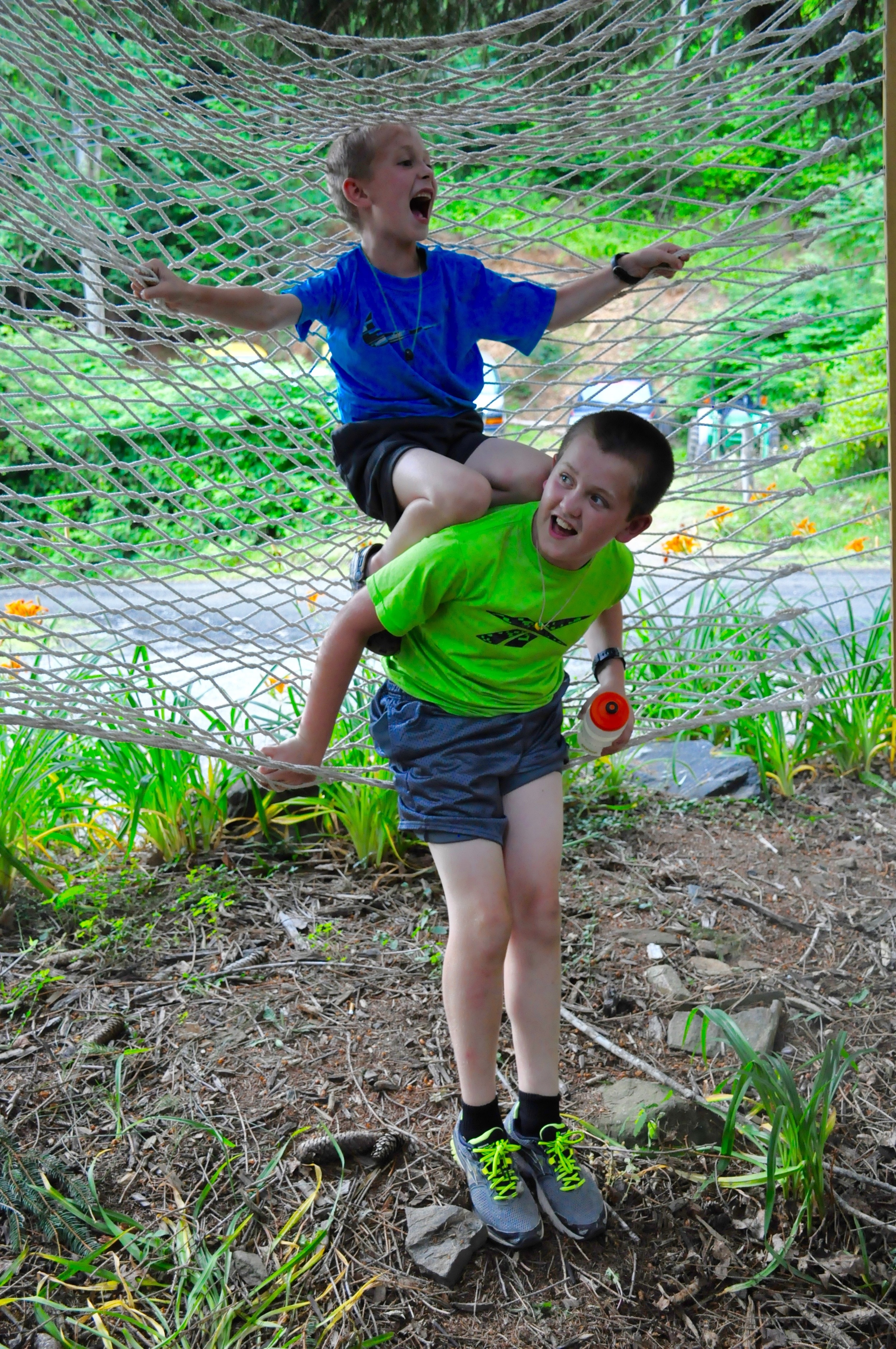
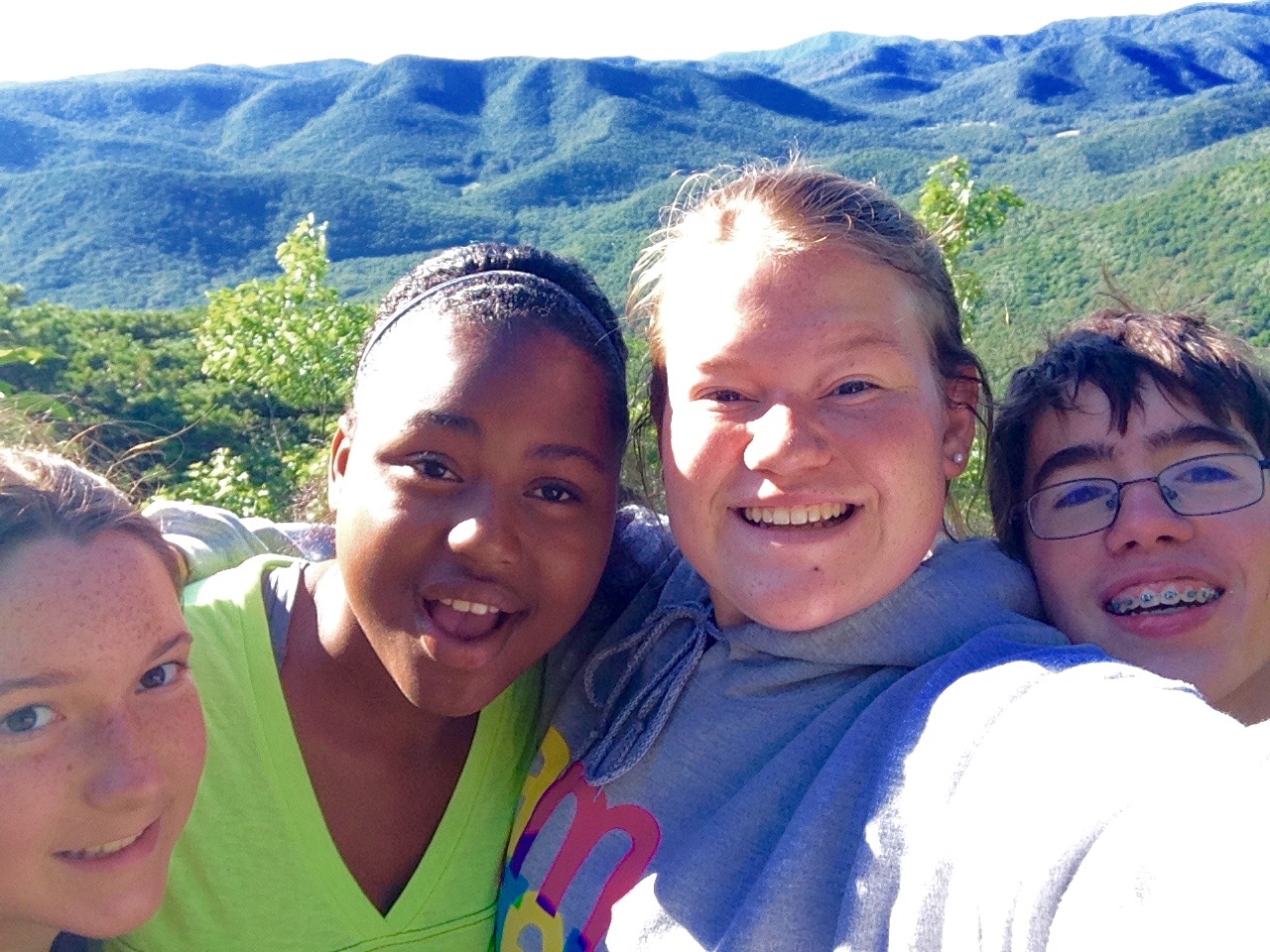
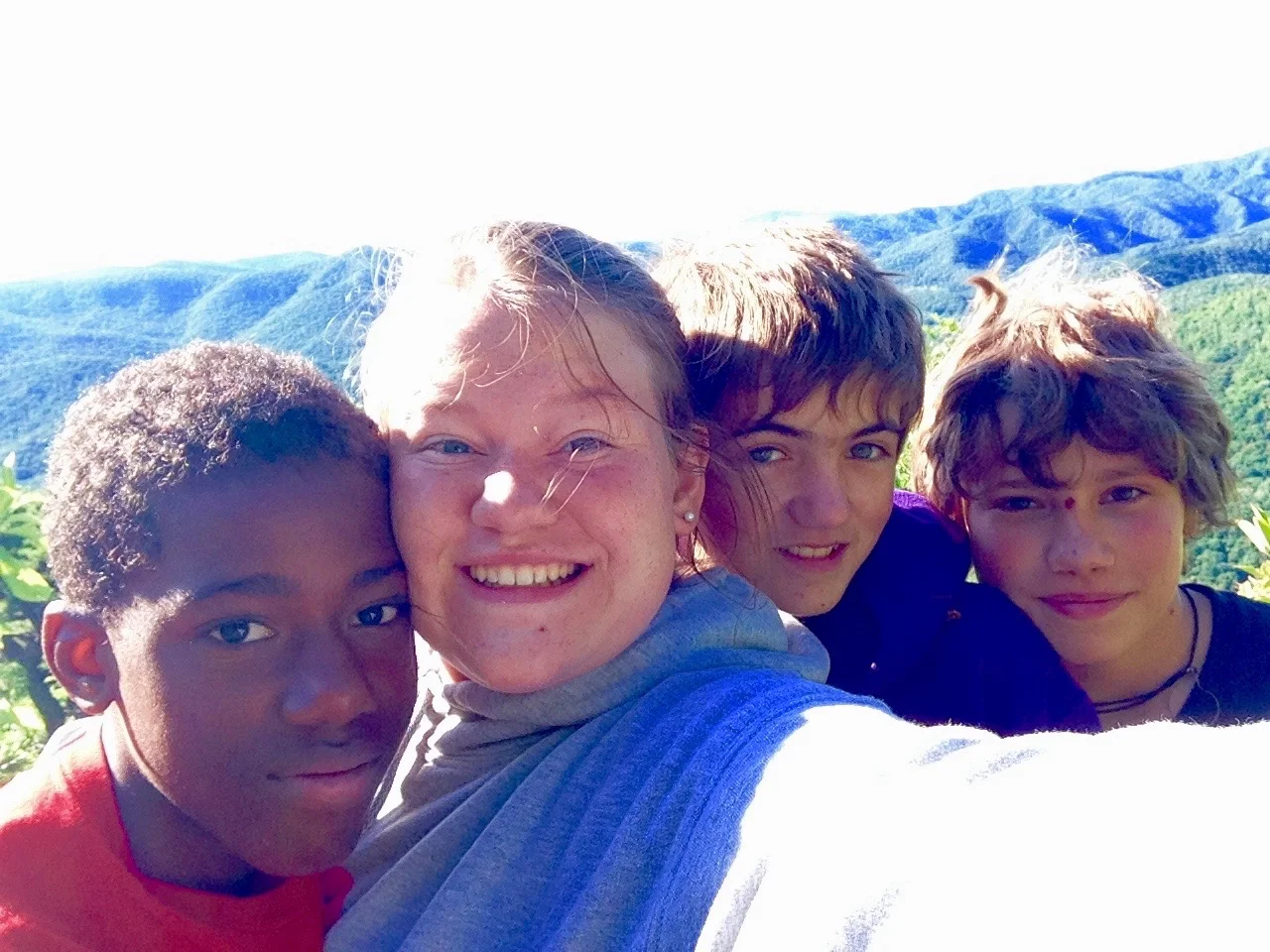
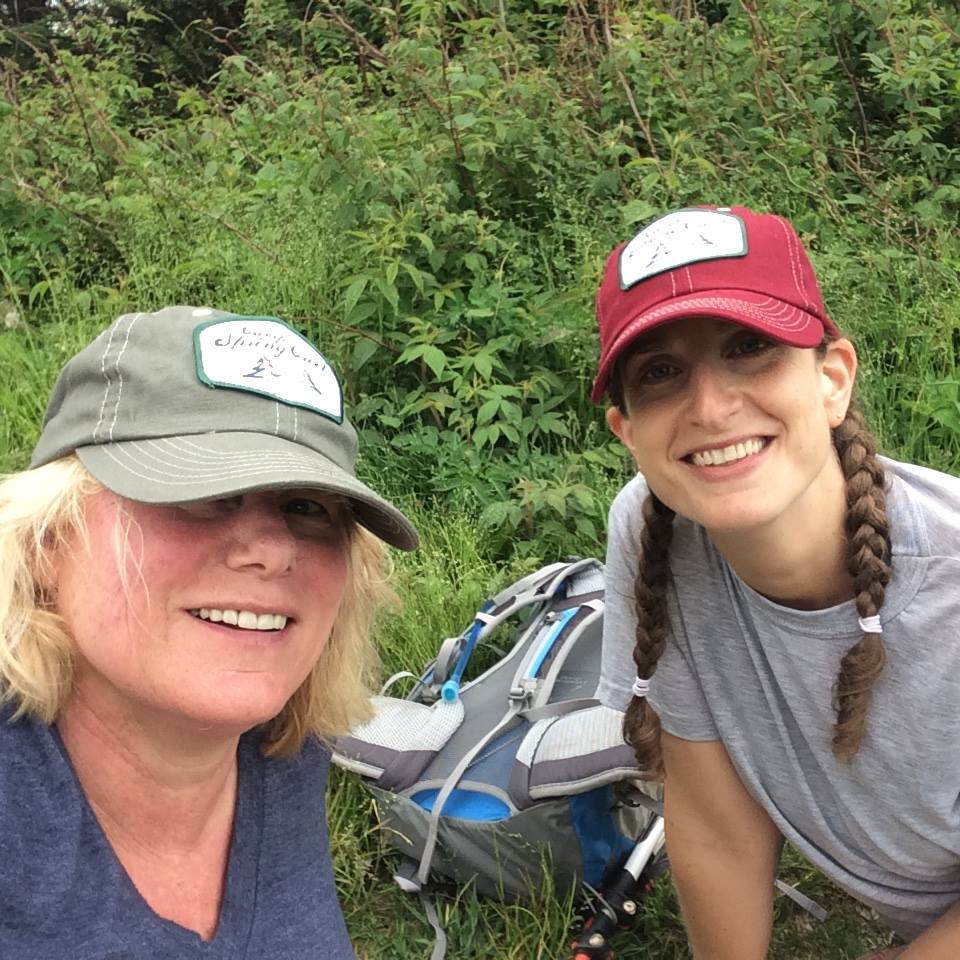 This spring, Susie and camp press manager Katey headed up the trails into the Black Mountains to scout for water and campsites appropriate for this year's first-ever Camp Spring Creek backpacking trip! Katey is an experienced hiker who grew up in Oregon and has led trips for schools in the past. She was also an AmeriCorp volunteer working in partnership with the New York State Department of Environmental Conservation to build, maintain, and service backcountry trails in Adirondack State Park (a park six times the size of Yellowstone!). She's excited to give the campers a positive, challenging experience, similar to the trips she was sent on as a child all over the West.
This spring, Susie and camp press manager Katey headed up the trails into the Black Mountains to scout for water and campsites appropriate for this year's first-ever Camp Spring Creek backpacking trip! Katey is an experienced hiker who grew up in Oregon and has led trips for schools in the past. She was also an AmeriCorp volunteer working in partnership with the New York State Department of Environmental Conservation to build, maintain, and service backcountry trails in Adirondack State Park (a park six times the size of Yellowstone!). She's excited to give the campers a positive, challenging experience, similar to the trips she was sent on as a child all over the West.
After some investigating and timing, Susie and Katey decided the campers will hike about halfway up Colbert Creek Trail the first afternoon of our hike and camp out here:

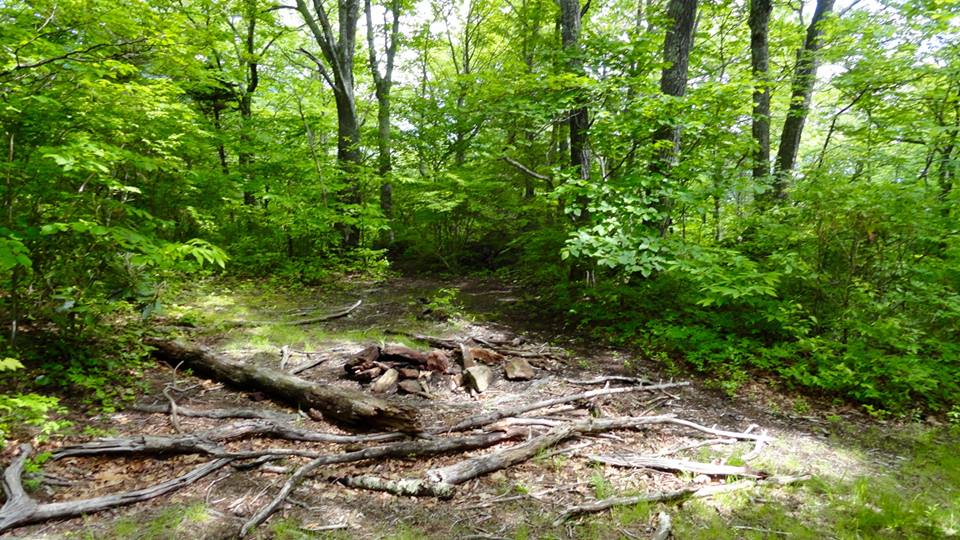
Not shown, of course, is all the gear and water we'll be huffing up there, not to mention the distant cooking site, latrine site ( = dig your own hole in the ground), and bear-bagging tree ( = really tall tree, really far away, with the perfect outstretched branch to throw a rope over).
The next day, we'll day hike up to Deep Gap and the Black Mountain Crest Trail for awesome views looking west over the South Toe River Valley and east toward the Cane River Valley. After a break, we'll hike further to summit Winter Star Mountain at 6,203 feet. Later, back at Deep Gap, we'll likely adventure around for a good water source, then hike down to "base camp" for the night. In the morning, we'll hike back down Colbert Creek Trail to the vans, hive-fiving all the way!
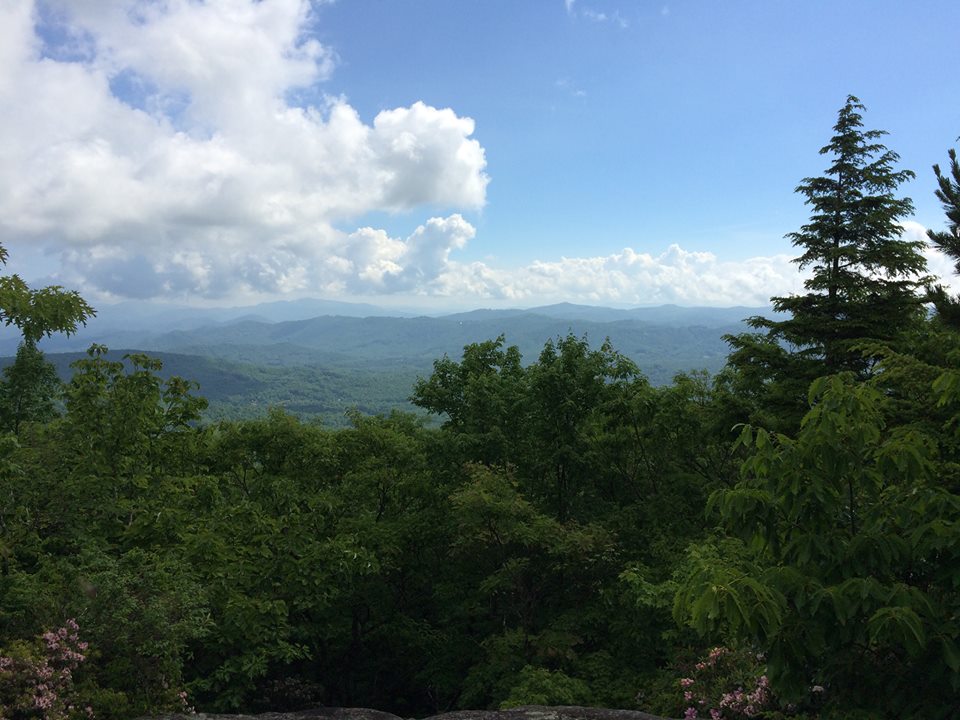
Fresh from camp, these clips were shot this afternoon when Katey met with the senior campers for their first introduction to backcountry basics. They rotated through stations to practice cooking a meal, packing and fitting a pack, pumping and purifying water, and digging cat holes for a backcountry latrine. They'll spend an additional hour each day this week practicing these skills, as well as time sorting and packing food and gear as they get ready to hit the trails this Friday! At the end of our afternoon, each camper shared "Hopes & Hesitations" by writing down one thing they hope for on the trip and one thing they feel hesitant about. We shared the hopes and hesitations anonymously and debriefed, getting pumped up for the trip.
[youtube https://www.youtube.com/watch?v=AbEUVxC0aV0&w=560&h=315]
The campers arrived this weekend! We're thrilled to welcome them and wish everyone safe travels back across the globe as you make your way from Bakersville, North Carolina to home. Here's a little breakdown of info about some of this year's campers: 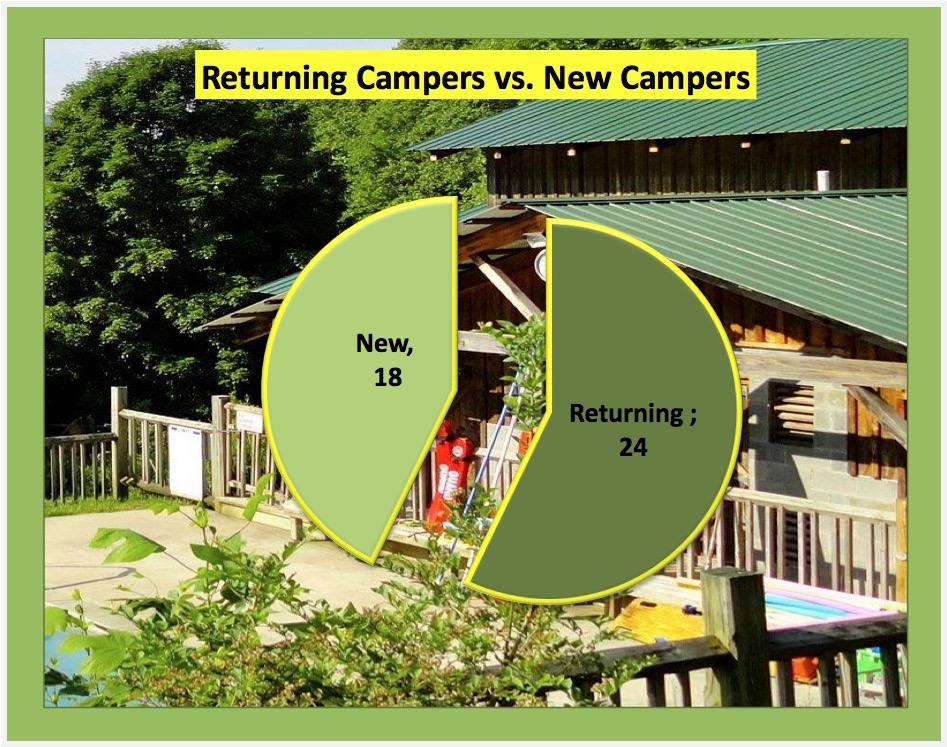
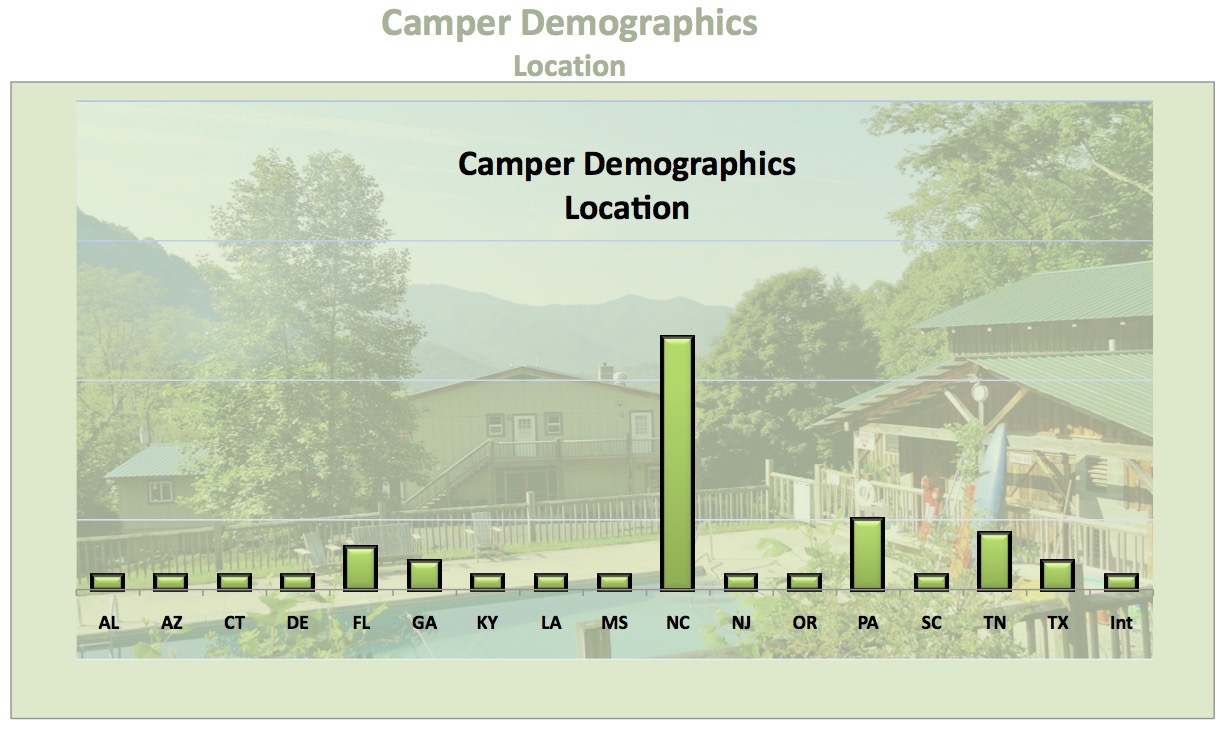
Thanks to our camp photographer, Nina van der Vorst, for these opening day snapshots. We're having a blast so far!
Last month, Susie led 5 women through the Orton-Gillingham Associate Level Training program out at Camp Spring Creek. After many hours of work, many tests, many flashcards, and even more observations to come, these women finished strong. We want to acknowledge their efforts in the course, as well as the support from their families who were without them for 10 days. Traveling from Pennsylvania, Alabama, and South Carolina, they gave up a lot to be here...and chose to work hard for the betterment of children with dyslexia. THREE CHEERS!
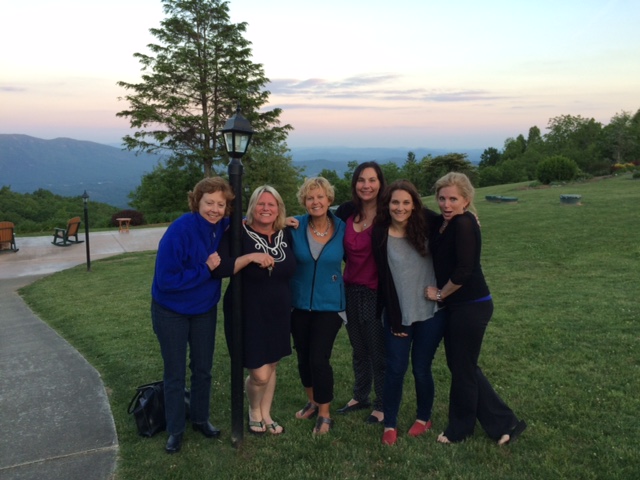
For those of you who use our YouTube channel and this blog as an educational resource, we've sorted the categories on our site (on the right sidebar) to make it easier for you to find the videos you're looking for. Camp videos and educational/training videos are separated into their own tags under Resources--please explore, and enjoy!
 Today’s interview features inspiring individual Rebecca Kamen, whose artwork we first read about in this article via PBS. Continuing our conversation with artists who are dyslexic, we’d like to introduce you to her work and share the following interview. “Rebecca Kamen’s work explores the nexus of art and science informed by wide ranging research into cosmology, history, philosophy, and various scientific fields…Ms. Kamen has exhibited and lectured in China, Chile, Korea, Egypt, and Spain. She has been the recipient of a Virginia Museum of Fine Arts Professional Fellowship, a Pollack Krasner Foundation Fellowship, two Strauss Fellowships, and more.” She is currently a professor emeritus of art at Northern Virginia Community College.
Camp Spring Creek: “Divining Nature: An Elemental Garden” is awe-inspiring! So many of us stared at that Periodic Table of Elements for hours on end in high school. Not nearly as many went on to actually understand what it was all about, or how to apply that knowledge in applicable ways. Can you tell us about what sparked this art installation?
Today’s interview features inspiring individual Rebecca Kamen, whose artwork we first read about in this article via PBS. Continuing our conversation with artists who are dyslexic, we’d like to introduce you to her work and share the following interview. “Rebecca Kamen’s work explores the nexus of art and science informed by wide ranging research into cosmology, history, philosophy, and various scientific fields…Ms. Kamen has exhibited and lectured in China, Chile, Korea, Egypt, and Spain. She has been the recipient of a Virginia Museum of Fine Arts Professional Fellowship, a Pollack Krasner Foundation Fellowship, two Strauss Fellowships, and more.” She is currently a professor emeritus of art at Northern Virginia Community College.
Camp Spring Creek: “Divining Nature: An Elemental Garden” is awe-inspiring! So many of us stared at that Periodic Table of Elements for hours on end in high school. Not nearly as many went on to actually understand what it was all about, or how to apply that knowledge in applicable ways. Can you tell us about what sparked this art installation?
Rebecca Kamen: This idea for the project came to me when I returned home from a lecture trip to Santiago, Chile. I literally walked through my front door and had a vision that I needed to create something inspired by the Periodic Table. I had no idea why that struck me at that point, but the research took me to the Chemical Heritage Foundation (CHF) in Philadelphia to research the beginning of chemistry, which was alchemy. I didn’t know what form the installation would take at that stage. I was just researching.
In the library there, the alchemy manuscripts I looked at were breathtaking. I happened to be on sabbatical that year and decided to travel to the Himalyas in Bhutan. I had seen a print of mandala inspired by that place and wanted to see it in person. Standing there in the mountains, I realized that the Periodic Table was Western cosmology in the same way that the mandala I had seen represented Eastern cosmology. If you study the Periodic Table, you know that all the letters and numbers represent things in the world above us, below, and everything in between. I knew I needed to create something beautiful and compelling enough that people would want to learn more. The concept of using a garden inspired by the orbital patterns of the 83 naturally occurring elements in the Periodic Table seemed like a natural leap, because gardens are beautiful and inviting spaces and I knew people would be able to engage with that. As it turned out, the orbital patterns also looked like flowers, so things started to click into place from there.
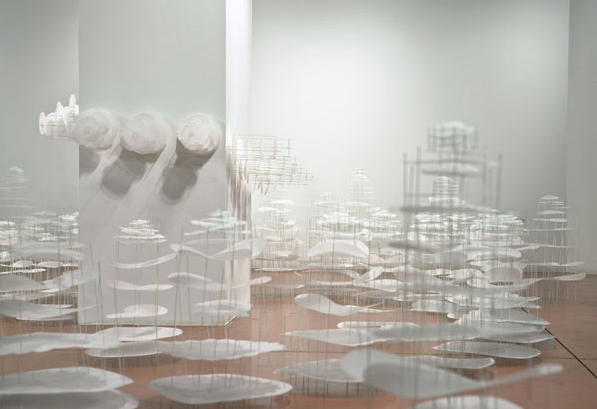
One of the bridges between art and science is math, which creates a universal language between both fields. When I was creating Divining Nature, I knew I wanted a sound component. I found Susan Alexjander in Portland, Oregon who was investigating the Period Table like I was, but with sound. She and I have now worked on three or four projects—the latest is called “Portal” at the National Academy of Sciences—and it is inspired by gravitational wave physics and black holes. I think it’s important to remember this connection of music, too, because it can really enhance our understanding of something. Sound is simply another way knowing. [View the video of "Portal" here.]
CSC: What is your dyslexia discovery story?
RK: I grew up before the word “dyslexia, was part of the vocabulary. ” I was bright and loved science but did poorly in math, reading comprehension, and on my SATs. I knew I wanted to teach and go to college. My parents knew this as well, but no college would accept me. My parents went to the principal who wrote a letter of recommendation for me, and Penn State eventually said they’d accept me on probation. If I didn’t make it through the first semester, I was out. I looked at the catalog and found that art education was the only major that didn’t require math and that was the route I was going to go. Working with my hands, I was able to excel. I graduated and later received a full fellowship for a master’s degree, finished that, and then received another full fellowship for an additional master’s degree in the arts. My parents’ advocacy really held a light for me to do what I wanted to do.
I didn’t learn that I was dyslexic until I became a college professor. I was visiting an acquaintance at the beach and she happened to be head of the Special Education program at University of Maryland. Through conversation about my path and my career, she realized I was dyslexic and told me. It was a revelation, but even without knowing that for most of my educational years, I think on a subconscious level I had already intuited I learned differently than others and figured out strategies to get through. Reading long pages of text still causes fatigue and some anxiety, but give me a book with images and I can tell you so much about them and how they relate to other things.
CSC: We’re especially interested in your projects that deal with rare books or scientific documents. Your interest in this material seems both ironic and intriguing. What’s the lure?
RK: The lures for me are the beautiful diagrams and visuals that express complex scientific thoughts and theories. At the American Philosophical Society Library in Philadelphia, I was invited to examine the notebooks of Lewis and Clark. They had text, but they were also beautiful objects that contained drawings of Lewis and Clark’s observations. I also saw Robert Hooke’s book called Micrographia at the Chemical Heritage Foundation and it includes engravings that he created. He was the first to develop the compound microscope. Hooke also created the word “cell” that we use to describe the cells in our bodies. He was looking at a piece of cork under magnification and he observed forms that reminded him of monastery cells. To me, that’s such a fascinating story. Narrative is what connects me to science and expands my mind.
Another epiphany I had as I went through many incredible books is that, before the advent of the camera, scientists also had to be artists. It was the only way they could record their observations. Before the 19th Century, the books have beautiful drawings not done by artists, but by the scientists themselves. I was invited to research inMadrid in archives that included a painting that Nobel Laureate and neuro-anatomist Santiago Ramón y Cajal did when he was just 8 years old. Observing the way that Cajal saw at a young age, I could understand how his ability to see and record details planted seeds for his discovery of neurons.
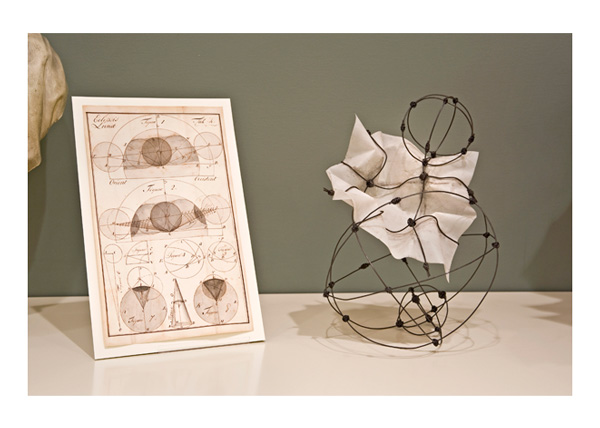
As an artist looking at this specific scientific collection, I realized the significance of Cajal spending hours drawing his observations directly from the microscope. Looking through a microscope at one of his slide, it occurred to me that the process of drawing enables scientists a unique understanding that, compared to today’s world of the digital image, is more comprehensive on a certain level. I think drawing enabled scientists at the time to really process and become more intimate with their material. This lead to a kind of understanding that can only be achieved when someone really takes the time to slowly investigate.
I was also able to explore special collections at the National Library of Medicine, which has an amazing selection of the Vesalius books. Vesalius was an anatomist from the 16th Century and he’s also considered the founder of modern human anatomy. Several copies of his book De humani corporis fabrica (“On the Fabric of the Human Body”) are there, hand printed, each with different nuances and notes from previous owners. The images are breathtaking. Dissection had been illegal for a long time, but when these books were printed, it was one of the first times that human dissection was documented.
CSC: We read that you believe artists and scientists have similar missions to search for meaningful patterns. Do you “see” your finished piece in your mind’s eye, then make it? Give us a little window into that moment of making when immaterial meets material.
RK: My ideas come to me as visions, a lot of times when I wake in the morning, a word or an idea will come into my consciousness. When that happens, I know I need to research and then use my findings to create work giving the ideas tangible form. The work becomes a vehicle for my own understanding, and a way to share these insights with other people. Much of my work is collaborative in nature, so communicating with others is a big part of the process as well.
For example, I am currently working on a collaborative project with a British poet. We’re exploring the relationship of art and neuroscience. Writing has always been a challenge for me, but for some reason I’ve been able to experience “flow” with my words around science and art because of this collaboration. The poet I’m working with interprets my ideas and thoughts into his medium and what he creates then further helps me understand my own original vision. I struggle a great deal with sitting down and actually writing, so this has been a revelation for me—it feels like magic. For the sculptural or installation component, I am starting to envision some ideas that might include words literally “coming off the page” so that viewers can experience his poetry in three-dimensional form. I get sparks of seeing how that might be possible and will keep exploring until our work is complete.
In order to understand just about anything, I have to be able to understand it in relation to something else. That enables me to make connections that others may not have made before. When I work with scientists, they get excited because I can show them things through a new lens. For years, I thought this was the way that everyone in the world thought! It’s validating to find this appreciation from others, and of course I grow and benefit from the learning experience as well.
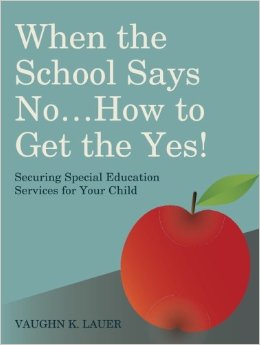 We're so excited about this new book rec find! From the Amazon book page:
"When planning a child's Individualized Education Program (IEP), it is vital that parents and educators are involved in collaborative decision making. This book offers parents of children with autism and other disabilities a unique way of approaching and tackling the problems that can arise relating to the provision of special education services. Taking a structured, cooperative approach to IEPs, the easily applicable six question process enables parents to determine the needs of their child and obtain the services required by asking key questions during IEP meetings. Explaining the approach through real life scenarios and issues, this book demonstrates how to achieve effective collaboration with school personnel, ensuring the child receives the appropriate and necessary educational program and services. Providing a practical, structured approach to IEP planning for parents and offering insight into the parental perspective for educators, this book is an invaluable resource for anyone involved in IEP meetings."
We're so excited about this new book rec find! From the Amazon book page:
"When planning a child's Individualized Education Program (IEP), it is vital that parents and educators are involved in collaborative decision making. This book offers parents of children with autism and other disabilities a unique way of approaching and tackling the problems that can arise relating to the provision of special education services. Taking a structured, cooperative approach to IEPs, the easily applicable six question process enables parents to determine the needs of their child and obtain the services required by asking key questions during IEP meetings. Explaining the approach through real life scenarios and issues, this book demonstrates how to achieve effective collaboration with school personnel, ensuring the child receives the appropriate and necessary educational program and services. Providing a practical, structured approach to IEP planning for parents and offering insight into the parental perspective for educators, this book is an invaluable resource for anyone involved in IEP meetings."
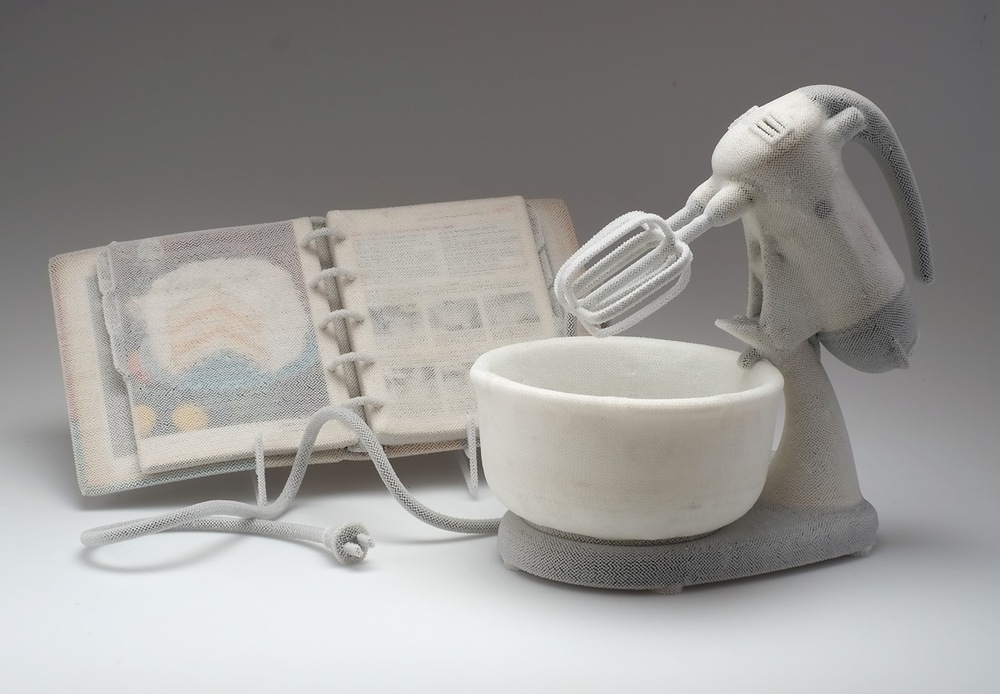
Today’s interview continues our conversation with artists who also have dyslexia, and we’re proud to be featuring inspiring individual David Chatt. David has spent the second half of his life stitching tiny bits of glass one to the next, laboring to express himself in a medium that is tedious and time-consuming beyond reason. For his efforts, he has been called a “Visionary,” a “Lunatic,” and a “Beadwork Subversive.” His career was honored with a one-person show at the Bellevue Art Museum in Seattle, Washington, which was commemorated in an accompanying catalog. More recently, he received a North Carolina Artist Fellowship, one of the highest grant awards given by the state and supported by the NEA. View astonishing slideshows of his work here.
Camp Spring Creek: Can you tell us a little about you and your family’s relationship with dysl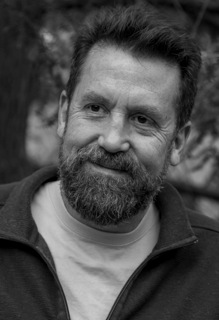 exia over the years? How has this shaped your experience of the world?
exia over the years? How has this shaped your experience of the world?
David Chatt: I am number five of six children, two girls and four boys. My father and all of the boys had dyslexia, but not to the same degree. Mine was less debilitating comparatively, but it did influence how I grew up. We were none of us very good at sports, and English classes were an exercise in humiliation. We all had similar experiences in school and not being good at these things in an odd way bound us together. Also, I think because we were not those kinds of people, we shared other interests. We built things and made things with our hands. We played games where imagination was more important than coordination.
CSC: The physical process of stitching beads together requires a sophisticated understanding of spatial relationships so that the beaded “skin” fits perfectly over the object you are working with. Superior spatial thinking is a common skill found in people with varying degrees of dyslexia. What can you tell us about your decision-making process as you set out to start stitching these skins?
DC: The technique I employ is a way of building on a three dimensional grid. A loop of four beads can be thought of as a square, one square shares a side with its neighbors and a grid forms. If one can make squares, then one can make cubes…this is how my mind works. I tend to imagine shapes broken down into squares, triangles, pentagons or trapeziums. I have always been good with numbers and math-y kinds of things…spelling no…math yes.
CSC: How does your work as an artist and your family experiences with dyslexia influence your style as a teacher?
DC: I understand that everyone learns differently. I hope and believe that schools are better at dealing with different learning styles but I have certainly been made to feel “less-than” by overworked and under-inspired teachers who wanted nothing more than for this square peg to fit into their dang round hole. As a teacher, I make it a point to let my students know that I understand learning differences and that I count on them to let me know if we need to revisit some instruction with a different approach. Some need to hear the technique described, others need to see directions written out, others need to watch my hands and others still need to have guidance while their hands make the work. I also make it ok to ask me to repeat things because repetition is one of the ways we learn. Being a non-traditional learner has made me a better teacher, and it has also made me understand some of the frustrations my teachers had with me.
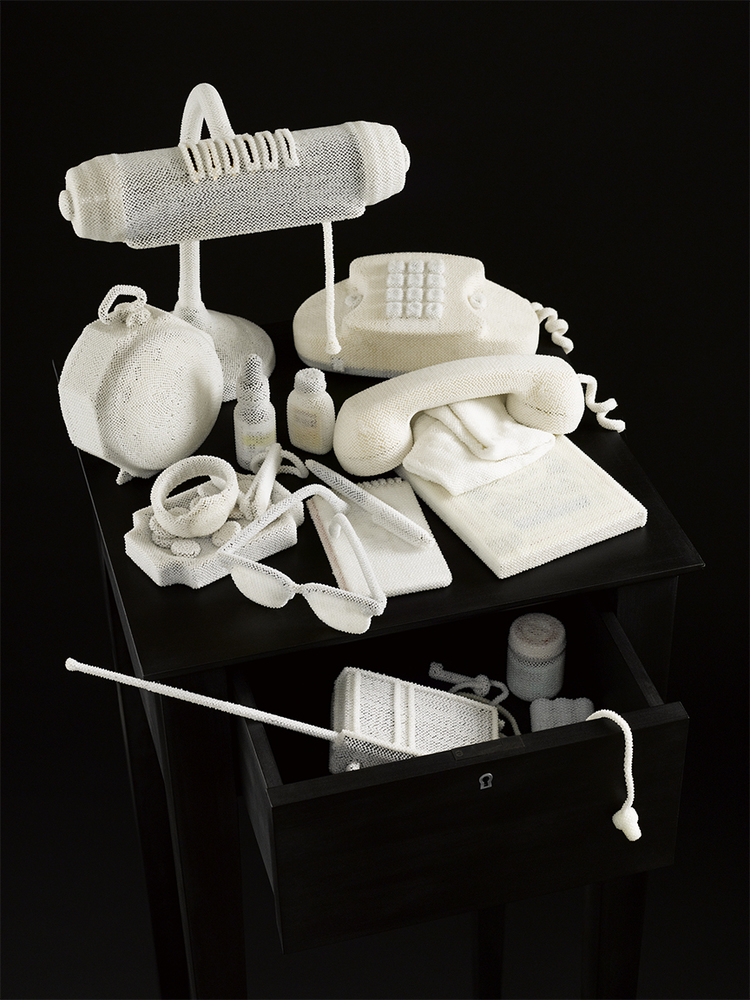
CSC: Your more recent work explores the power of everyday objects in their domestic setting, with an emphasis on narrative, memory, and emotion. In some pieces, you’re effectively taking objects people ignore (for example, we don’t pay attention to our eyeglasses unless a lens pops out) and re-invigorating them with story and a sense of the three-dimensional through your beads and stitching. That’s quite unusual, yet immediately resonate. What’s the lure for you?
DC: Most artists are a wee bit narcissistic. I am always trying to tell my story through the images I choose to engage. My best work finds the place where my personal story touches on something more universal, something that allows my audience to participate. Most of us remember someone who had those glasses. I grew up at a time when women of a certain age wore cat-eye glasses, a strand of pearls and a sweater set. Even if you have only seen that look in old movies, most of us have an association with these items. I seek iconic objects that trigger memory. By covering an object with countless tiny glass beads and meticulous needle-work, I encourage my audience to see these items in a different way. It becomes less that object and more like the place where the object once was, like a memory.
Finding a way to tell your own story is a universal human pursuit. I sometimes wonder if being a kid who was embarrassed about my penmanship and spelling made visual art more of a lure for me. With the advent of the personal computer and spellcheck, I have gradually become less intimidated, and even attracted to the process of writing. This is a surprise to me given my early experiences. In the end, I think it is important to understand that things that are labeled as “disabilities” are often just differences. I am good at this while someone else is good at that. Part of being a creative person is being able to figure out the less obvious ways to get around obstacles. What I have learned from my differences has certainly been more of an advantage than a hinderance.
Summer 2015 launches in just 6 short weeks. We're busy getting ready--finalizing hiring, planning training, dreaming of weekend dances... Meantime, we just finished up a Classroom Educator Course in April and have an Associate Level OG Training scheduled for May.
Oh, and our Press Manager who manages our blog, Katey, is getting married next week!
All of which is to say: We'll be pausing the blog until early June. It's for a good cause--we're getting ready for YOU!
Thanks for your support from near and far. We value your readership and our online community. Stick with us!
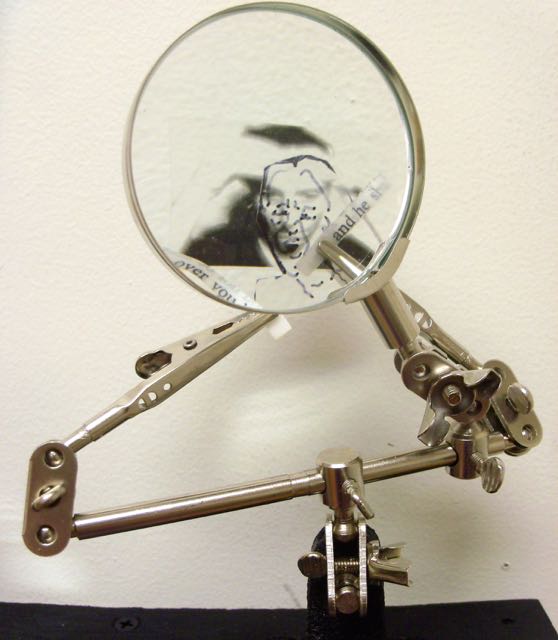 Today's interview features inspiring individual Melisa Cadel. Melisa has an MFA from East Tennessee State University, with an emphasis on Sculpture and Studio Art, as well as a BFA in Drawing and Painting from University of North Texas. She serves as an adjunct professor at Appalachian State University and leads workshops at craft centers across the United States. She did not realize she was dyslexic until her son Ben was diagnosed in 4th grade. Similar to artist Courtney Dodd's insights about art, perception, and making, Melisa shared a story with us that is moving, compassionate, and vulnerable. Please join us in celebrating her accomplishments and aspirations for the future!
Today's interview features inspiring individual Melisa Cadel. Melisa has an MFA from East Tennessee State University, with an emphasis on Sculpture and Studio Art, as well as a BFA in Drawing and Painting from University of North Texas. She serves as an adjunct professor at Appalachian State University and leads workshops at craft centers across the United States. She did not realize she was dyslexic until her son Ben was diagnosed in 4th grade. Similar to artist Courtney Dodd's insights about art, perception, and making, Melisa shared a story with us that is moving, compassionate, and vulnerable. Please join us in celebrating her accomplishments and aspirations for the future!
Camp Spring Creek: When did you first suspect that you had dyslexia and how did that realization affect you?
Melisa Cadell: I always tested poorly when it came to standardized tests. I could not spell and reading comprehension was non-existent. I always compensated by listening to what people said about things. I hung out with the intelligent people and soaked up their discussions. I made good marks but was always doing more work than the others to make up for my difficulties. When I applied to colleges there was no problem until they received my horrible SATs and ACTs. I had to be interviewed at the college institution that offered me a basketball scholarship because the scores were so low; I think they just wanted to see if I had an IQ at all. I always thought it was some type of test anxiety or something. I could do just about anything if I had enough time and studied harder than the others. I never dreamed that I was dyslexic.In college, I took classes that were more hands on, after I clomped through remedial English twice, and developed really great study skills. I enjoyed my Literature classes because the instructor I had (for both sections) walked us through each passage. I took copious notes and made great scores on the long essay tests. If someone explained the texts to me I could read multiple meanings into passages. It was like a playground. I graduated with honors in my BFA and a K-12 teaching certification in Art Ed. It took me 6 years. Art was the first thing I did not struggle with. It was a field where there wasn’t a right or wrong as long as you found a non-cliché way to do it. It was about problem solving so the more problems you had the more possibilities existed.
I did not put a label on my inability to be a functional reader until after I completed my MFA with a 4.0. Again I struggled more than my peers but I accomplished what I wanted to. Ben, my oldest child, was diagnosed in the middle of his 4th grade year. Now, I know we are both dyslexic. Why didn’t someone figure this out before Ben’s fourth grade year? Was it because of me? He had all the same struggles. He gets words confused. He has to read things very slowly, more than once. He has difficulty copying things down from the board. Spelling is problematic. He forgets words in the middle of a sentence. He is confused about social interaction. He is terribly forgetful and his organization is very poor. He thinks backwards, like me.
The knowledge of my own disability is wrapped up with the diagnosis of my son and his difficulties. It is not easy for me; it will not be easy for him. I am pleased Ben received his diagnosis and is getting help from an Orton Gillingham tutor. I worry though; at least I was not pegged with low scores and a stigma until I was older. I was not kept from the things I loved because of the struggles. I was always placed in class with my peers and allowed to study any subject I wanted. I just want Ben to hold onto his desire to learn about this amazing world. I am pleased with the ability to see things this way, but it puts me on the outside. Sometimes, that is a lonely place to be. It is because of this solitude that I found myself through art. It communicates all the things I have never been able to voice in any other way. It is only my art that makes me feel like I might have a small understanding of what it means to be a part of this amazing world.
CSC: You're an artist, working primarily in sculptural ceramics. Many studies have shown that people with dyslexia have strong spatial thinking skills and can also "think outside the box." In what ways do you see that dyslexic advantage manifest in your work as an artist?
MC: I think that because it takes me so long to process things, I spend more time thinking. I work at it. I try to see a human side of events. I pay attention to struggles. In a way, I think my artwork is about my effort to comprehend how others see things. As an artist, I use my perception to turn something it on its ear. I do not see struggles in black and white, rather; I see in grey, in a light that is not easily understood.I think much of society is spoiled by the perceived apparent. It seems that people want a right way and a wrong way…but this leaves out the complexity. Complexity is rich and colorful, it is messy, it is beautiful and it is haunting. My work honors something in us all; it is about who we are as humans, that which is good and that which is not. I have not figured it out and do not expect to…and because I learn differently, I have learned to embrace the struggle, as well as, the fact that it does not make sense.
CSC: How has realizing your own dyslexia shaped your relationship with your son, who also has dyslexia?
MC: We are still working through it. It is difficult. I feel very upset about how he has to struggle through things while others do not. In the end, I know it will be a benefit. If he can learn to embrace it for what it can show him, difficult as it may be, he will become a success in whatever it is he wants to do. It is sometimes heartbreaking and I just have to have faith in him that he will find his way. Because of dyslexia, I think he will become a more compassionate person.
I push my son to do his personal best because I know how bright and compassionate he is. I am sympathetic and it makes me a passionate advocate, but that can complicate matters if I don’t step back and problem solve first. Teachers that do not understand the hours it takes to do what others do in a matter of minutes frustrate me, but they do not know what we (dyslexics) know and experience. I have begun to piece together ideas for parents and for teachers. My goal is to make a roadmap that benefits the student. I have built a real relationship with Ben’s teachers this year and believe we are all making progress to make the path easier for those to come.
CSC: Did you have any teachers or relatives throughout your upbringing who you felt most keenly understood your strengths and challenges? Tell us about that individual, and how they made an impression on you.
MC: My parents were always there to let me know that if I wanted it I had the power to achieve it…I know they had to work hard, and it was an encouragement to me. I believe that my mother is dyslexic; it seems she has been crippled by her inability to read and write well. She is a brilliant thinker. Yet her self-confidence was terribly damaged in her youth and she has spent her entire adult life building, it tearing it down, and building it again. I think she often lives through the accomplishments of the ones she has supported. She has felt inferior to those who finished college and made careers for themselves. She is so creatively intelligent and I just wish I could sit within her mind and look at the wonder of it all. I have a feeling that Ben’s diagnosis is helping her see there was a reason she had it so difficult. Knowing why something is the way it is, sometimes, is the first part of healing and the first step to believing.
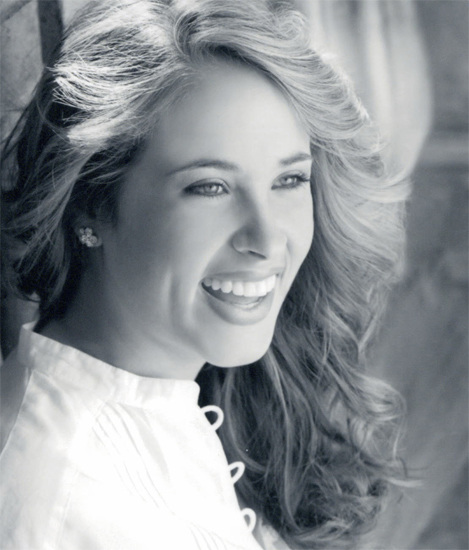 Today’s interview features inspiring individual Madalyne Marie. The bio on her website offers a delightful introduction: “Madalyne didn't discover her artistic talent until her freshman year of college, however, she always found ways to cultivate her creativity. She grew up dancing, drumming, canyoneering and river rafting. She always had an interest in learning new things, traveling to new places, and helping others to find strength in their challenges. Her proudest accomplishments include having a piece on exhibit at the Smithsonian…Madalyne lives by the firm belief that good design and creative expression should be applied to everything she does, including cooking, rearranging her furniture, or singing car karaoke at the top of her lungs. She and her husband, Dustin, have been married for five years, live in New York City and have exactly zero children.”
Camp Spring Creek: So much of the design and logo work you have created for companies like Avon, Mark, Coach, and Four & Twenty Sailors involves unique interpretations and layout of letters and symbols. As professional with the dyslexic advantage, we find this especially intriguing. In what ways do you think being dyslexic informs your creative decisions with letters and symbols, specifically?
Today’s interview features inspiring individual Madalyne Marie. The bio on her website offers a delightful introduction: “Madalyne didn't discover her artistic talent until her freshman year of college, however, she always found ways to cultivate her creativity. She grew up dancing, drumming, canyoneering and river rafting. She always had an interest in learning new things, traveling to new places, and helping others to find strength in their challenges. Her proudest accomplishments include having a piece on exhibit at the Smithsonian…Madalyne lives by the firm belief that good design and creative expression should be applied to everything she does, including cooking, rearranging her furniture, or singing car karaoke at the top of her lungs. She and her husband, Dustin, have been married for five years, live in New York City and have exactly zero children.”
Camp Spring Creek: So much of the design and logo work you have created for companies like Avon, Mark, Coach, and Four & Twenty Sailors involves unique interpretations and layout of letters and symbols. As professional with the dyslexic advantage, we find this especially intriguing. In what ways do you think being dyslexic informs your creative decisions with letters and symbols, specifically?
Madalyne Marie: I see words and letters as shapes. This helps me see how the letter-forms interact with each other, as well as the space and the environment that they’re in. That environment might be a website or magazine cover for instance. Being dyslexic also helps me see connections between things and solve visual problems quickly because I can bring my intuitive sense for consistency, evolution, and difference into the brainstorming process. When I work with others, this helps me make the visual connections needed to get the job done, as well as to work efficiently.
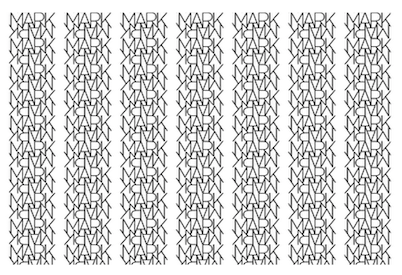
CSC: As a graphic designer, your mediums are color and light—two intangible substances. In what ways does being dyslexic inform your ability to manipulate color and light in markedly stunning ways?
MM: Being dyslexic helps me visualize things more clearly and naturally, so I can visualize before I execute ideas. I can see the outcome beforehand and I can see the potential problems as well, so—all around—the work is quicker. For instance, I might decide that I can’t make a background one color and a design feature another color because, in my mind, I can see beforehand that it’s not going to be visually compelling in the way that I want it to be. This is a really positive and empowering tool and I’m still experiencing how useful and important it is, both artistically and professionally.
Growing up, no one shared a message with me about dyslexia that was positive. No one said to me, “I’m dyslexic, I did ok. You’re going to be ok, too.” I’m so passionate about this message now, because there are kids in schools that still think there’s something wrong with them. We need to let them know they’re not attached to a label or an expectation and they’re not attached to shame. They have really positive and empowering tools within themselves, just like I had to discover, as well.
It’s so much easier to label a child “bad” instead of “good.” That kind of thinking isn’t working well for today’s kids. We have to get in on the ground level and reach out to the younger generation. They’re the ones who will change the conversation going forward. If we can get them through school, the more they understand that they’re capable and that they’re needed, the better the world will be.
CSC: What can you tell us about the interactive Dyslexic Advantage traveling installation?
MM: It’s a large, interactive installation that combines three components—the experience of someone growing up being dyslexic, juxtaposed with what dyslexia really is, along with an interactive activity that helps someone experience what it could be like for people who are dyslexic. The installation is fairly large and you can pick up letters and interact with it and move things around to complete your experience.
The title of the installation is Dyslexic Advantage, named after the book and research by Brock and Fernette Eide, because it’s such an incredible resource and inspiration to me. They focus on the struggles, but also the achievements of people with dyslexia. That message was important for me to hear.
I made the installation for the capstone of my BFA project at Brigham Young and it was really life changing. The project let everyone know I was dyslexic. I hadn’t really told people before because I didn’t want people to hold me to different standards. I entered the installation into a few exhibition contests, including the Smithsonian, and a few months later I was accepted into their show called “In/finite Earth,” that toured around the world in 2013.
CSC: In brief, what is your dyslexia discovery story? How and when were you identified and in what ways did that influence your life as you moved forward?
MM: I didn’t actually learn what it means to be dyslexic until my senior year of college. I was identified as dyslexic in 2nd grade and was put in special education my entire childhood. My teachers never sat me or my parents down and told us what it all meant. So for many years, I just thought “dyslexic” was a nicer way to say someone was really stupid or unintelligent.
That’s a really hard way to grow up—believing that you’re never going to be as smart as anyone else. I could always tell that the expectations weren’t as high for me and I didn’t like that. When I got to college, I was able to take my first art class. Growing up, I had extra reading and writing classes, so I was never allowed to take art. But in college, at the end of my first semester, my teacher asked me what I was going to major in and I told him Communications. He told me I was crazy if I didn’t major in Art. To make a long story short, I went with art and, in particular, graphic design, and won an award pretty early on. My capstone project was about dyslexia and traveled around the world through the Smithsonian. Finally, I really, truly, started to understand what dyslexia was—and all the positive things it entails.
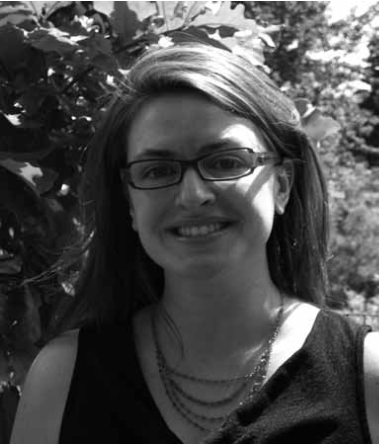 Today’s interview is with inspiring individual Alison Awes. She directs the AMI Elementary training course at the Montessori Center of Minnesota and at Assoziation Montessori Schweiz in Lucerne, Switzerland. She is also the Co-Director of Elementary Training at the Maria Montessori Institute in London. Alison holds AMI diplomas for Primary and Elementary levels, a B.A. in Art History from Smith College, an M.A. in Latin American Studies from Tulane University, and a M.Ed. in Montessori Education from Loyola University in Maryland. She has taught in both six-to-nine and nine-to-twelve classrooms. Alison is an AMI examiner and has served on the boards of private and charter Montessori schools, as well as other organizations including the AMI Elementary Alumni Association. Ms. Awes attended Montessori school until the age of twelve.
Camp Spring Creek: How did you find your way into this particular niche area of overlap between OG and Montessori?
Today’s interview is with inspiring individual Alison Awes. She directs the AMI Elementary training course at the Montessori Center of Minnesota and at Assoziation Montessori Schweiz in Lucerne, Switzerland. She is also the Co-Director of Elementary Training at the Maria Montessori Institute in London. Alison holds AMI diplomas for Primary and Elementary levels, a B.A. in Art History from Smith College, an M.A. in Latin American Studies from Tulane University, and a M.Ed. in Montessori Education from Loyola University in Maryland. She has taught in both six-to-nine and nine-to-twelve classrooms. Alison is an AMI examiner and has served on the boards of private and charter Montessori schools, as well as other organizations including the AMI Elementary Alumni Association. Ms. Awes attended Montessori school until the age of twelve.
Camp Spring Creek: How did you find your way into this particular niche area of overlap between OG and Montessori?
Alison Awes: I’m dyslexic and I went to Montessori school as a child in the 70’s and 80’s, when there wasn’t much awareness about dyslexia or processing disorders. It wasn’t until I was in college and my younger brother was in middle school and he was diagnosed with dyslexia, that I made the connection. A lot of things came together for me at that time and I went and got tested as well. So much opened up for us as a family at that point and the pieces fell into place.
I moved on to art history and eventually art education, but I felt my specialization was too narrow. I went home and had lunch with my old Montessori schoolteacher in Minneapolis, and he suggested Montessori training. Once I got into the classroom, my own experience with my own learning was finally able to support the psychology and development of the children I was teaching.
I didn’t take OG training until much later. As you know, Montessori started in many ways with special needs children. So much of what she discovered was born from this idea of different learning styles. Eventually, when I took OG training, I saw that the principles there were the principles I was already using in Montessori—for example, multi-sensory work. I saw very clearly that the vast majority of the principles in both of these systems were working together.
CSC: How have you integrated OG principles into your Montessori classrooms?
AA: Because I work mostly with adults who are training to be Montessori teachers now, I’ll share how I’ve worked with them. When I teach trainees, I teach that we need to remember that every child is a learner and we’re there to nurture that. We can’t make them learn, but we can create the psychological and physical environment for their optimum development. That’s true for children with dyslexia as much as it is true for any other learner--a child with a physical impairment, a child with no hindrances at all, etc.
My hope now is that my trainees take those principles and use that to support all of what they do. If 3-year-old children aren’t attracted to rhymes, that’s something a teacher needs to take note of. Just because a child isn’t reading yet, doesn’t mean a teacher can’t have his/her eyes open to see who is at risk. It’s the awareness piece that I’m able to bring to my trainees.
CSC: You wrote a phenomenal article about dyslexia and the Montessori classroom that details Congress’ National Reading Panel results, which in large part included recommendations that are very Montessori or OG related. Yet the results were sometimes criticized, and other times what they suggest has been hard to actually implement in the public school system. Why is that?
AA: This speaks to the bigger question about education in the United States right now. Over and over, we see this newfangled something that’s supposed to be the save-all in education. For example, “Oh let’s all be multi-sensory!” or “Let’s arrange our classrooms in tables instead of desks!” and this one trick will fix everything. It’s very difficult to get people to shift their thinking about how children learn.
There are also financial and political factors—textbook companies, taxes. For Montessorians and OG folks who are so passionate about what we do, there’s also a lot of “buyer beware” in the marketplace. Anyone can throw a Montessori sign on their door, but it may not have anything to do with the true, certified Montessori principles. OG has to face that somewhat as well. But if the neighborhood school with the Montessori/OG sign on its door does a poor job, that can lead to misconceptions.
Our educational system is rooted in the factory model. It was designed to help children who only went to school if they couldn’t find work on the farm. They were told that “children are seen, not heard.” None of that had to do with the child as his/her own person. Trying to break those molds is really tricky. What it boils down to is respect for the child and we’re not very good at that as a society. We’re good at putting a child in a playpen or in front of technology so the parents aren’t bothered. These things are really ingrained, even in the most well-intentioned parents. As a society, we have to look at that, too.
CSC: For our readers who may not be familiar with Maria Montessori's training methodology, your article offers a quick glance: "Teachers study observation theory and practice specific observation techniques so that once leading their own classroom, they are prepared to consider different learners’ approaches in context and devise strategies based on their knowledge of the different ways in which learning can work. Teachers learn about the nature of the child, including her sensitive periods, psychological characteristics, and human tendencies. In this manner, Montessori teachers already have preparation for noticing, and then meeting, the specific needs of any individual learner in their charge." Are there ways in which this method, proven to meet the needs of children of all learning styles--and dyslexic children in particular--can be integrated into the traditional university teacher training programs? How, specifically, and who is at the forefront of this integration right now?
AA: Integration is a tough one. Our early university classes (Intro to Education, Intro to Psychology) don’t often mention Maria Montessori. I think just having a mention in those kinds of survey courses would be a great place to start.
There are some universities where you can get an AMI certification and a master’s at the same time—Loyola University Maryland, Saint Catherine University in Saint Paul, and I believe in San Diego and Hartford as well—but it’s still two separate things. You have a Montessori certificate and you have a Master’s in Education. There are also other places where folks are trying to get AMI training count towards a teaching degree for the public education system.
One of the things our students at Saint Catherine’s do is actual research. This addresses an area as Montessorians that is really lacking—and that is published, credible research. We need more documentation for society to start to make advances. That’s what people respond to and if we want to see change, we’ve got to start there.
I do think that whenever the day comes that a person can get their Montessori training and their state license to teach in a way that doesn’t require two master’s degrees, that’s when we’re really going to open doors.
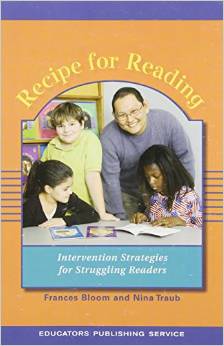 Now in it's third edition, Nina Traub's Recipe for Reading is touted as a go-to, must-have guidebook for those interested in using sequential, multisensory teaching methods with early readers. It has been praised by adminstartors, homeschool parents, public and private school teachers, and more. And if the philosphy really strikes you, additional "workbooks" and guidebooks can be ordered to accompany the lessons suggested in the book itself. Happy reading!
Now in it's third edition, Nina Traub's Recipe for Reading is touted as a go-to, must-have guidebook for those interested in using sequential, multisensory teaching methods with early readers. It has been praised by adminstartors, homeschool parents, public and private school teachers, and more. And if the philosphy really strikes you, additional "workbooks" and guidebooks can be ordered to accompany the lessons suggested in the book itself. Happy reading!
This month, Susie will travel to Brentwood (near Nashville) to present at the Tennessee International Dyslexia Association Regional Conference. The conference is still open for registration, and takes place April 17-18 at Curry Ingram Academy. Susie will have a booth set up for Camp Spring Creek and will lead several break out sessions between keynote presentations at the conference. The topics for this year's keynote presentations sound spot on:

There are only 6 days left to help Ben reach his goal! The Big Heart Ben scholarship initiative begins with a single camper. Ben has dyslexia and struggled academically. Awarded a scholarship for 4 weeks at Camp Spring Creek, he received one-on-one attention from trained Orton Gillingham tutors, improving his reading abilities by two grade levels. The next fall, Ben made the A-B Honor Roll. Now, Ben wants to pay it forward by sending a friend, who is also dyslexic, to camp. He's raising funds, despite the fact that returning to camp himself is beyond his family's reach. Camp Spring Creek's goal is to compliment Ben's local efforts by casting a wider net online, reaching generous donors like you. Camp is also matching dollars that are donated, so only half the tuition is needed to send just 1 child. Can you help? Donate online and share the post right here.
[youtube https://www.youtube.com/watch?v=wtqANa0nTJY&w=640&h=360]
We're thrilled that we already have 25 campers registered for the first session of camp, and 28 campers registered for the second session. The way the bunks, staffing, and numbers all work out, this translates to 5 open spaces for first session, and 2 open spaces for the second session (just about). If you or someone you know is a good match for Camp Spring Creek, please visit our admissions page, which will inform you about the application and tuition process. Meantime, feel free to reminisce with us by viewing this "opening day" video from a few summers ago:
[youtube https://www.youtube.com/watch?v=4Gyyr90k410&w=560&h=315]
We recently came across the text for “Teaching Kids to Read” by Ted Hirsch and were moved to share an excerpt with our readers. In depth, passionate, and precise, this essay offers the former principal of South Shore Charter School’s insights after many years as a teacher, administrator, and advocate for all kinds of learning in Massachusetts. Diagnosed with dyslexia, Hirsh appears to have had a particular interest in formulating a curriculum at his school that worked for children of all learning styles and abilities. Here’s an excerpt from Hirsch’s chapter called “Benchmarks,” which we found unique and specific:
There are well-documented statistics showing huge discrepancies in the amount of time students spend reading. The publicly stated goal of having every child be an independent reader by the end of third grade is any elementary school’s most important job. Without this independence, children will not read enough to acquire the vocabulary necessary for sophisticated discourse. Listed below are a set of benchmarks children need to meet to attain reading independence by the end of third grade.
Kindergarten
To be able to auditorily blend and segment three-sound words and nonsense syllables. To know the sound/symbol correspondences for the five short vowels.
To know the sound/symbol correspondences for all single letter consonants except for “q” and “y.”
First Grade
To be able to auditorily blend and segment two- and three-syllable words and nonsense syllables.
To correctly hear and transcribe all of the basic code.
To know the sound/symbol correspondences for all digraphs.
To know the sound/symbol correspondences for e-controlled vowels. To correctly form all twenty-six letters.
To be able to read books of the level of the Little Bear series.
Second Grade
To be able to auditorily blend and segment a seven-word sentence.
To be able to distinguish all the phonemes of English and make correct transcriptions. To take dictation of any material from the basic code and punctuate it accurately.
To know the rules for the soft “c” and soft “g.”
To know the rule of doubling the consonant after the short vowels when adding suffixes. To spell regular past tense verbs.
To read aloud fluently and for understanding, making pauses and voice modulations which demonstrate the understanding of punctuation.
To be able to sub-vocalize when reading.
To be able to read books at the level of Tales That Julia Tells.
Third Grade
To understand and use the combinational and generative nature of words (root words, prefixes, suffixes).
To take dictation of seven-word sentences (with words from the truly English layer of the language, thus excluding words of Latin and Greek or other foreign language derivation that do not take on typical English endings).
To be able to read books like Stuart Little by E. B. White or Ramona by Beverly Cleary. To read text orally, with the rhythm of speech.